Mercedes-Benz W 111/112
In our new series of reports we look back on the history of the Mercedes-Benz S-Class. Starting with the W 111 series, we take a look at a total of five generations of the post-war era, which in their own way have advanced the development of passenger cars. Under the brand slogan “The best or nothing”, which is still valid today, Daimler engineers repeatedly developed groundbreaking innovations for this top model. Years later, smaller model series and other manufacturers also benefited from this. The W 111 and W 112, for example, marked the beginning of a pioneering role in terms of occupant safety. But this S-Class – which wasn’t yet called that at the time – also enjoyed sporting success.
S-Class predecessor
Only the ‘grandchildren’ of this model generation slowly coined the term ‘S-Class’. In retrospect, however, even the marketing staff at Mercedes-Benz included the W 111 in this designation. At that time, the ‘S’ in the model types still stood for ‘Super’ and could also be found in smaller series. In the case of the W 111’s entry-level model, the Mercedes-Benz 220b, the ‘S’ was even completely omitted. The small ‘b’ was intended to distinguish the car from its predecessor model of the same name.
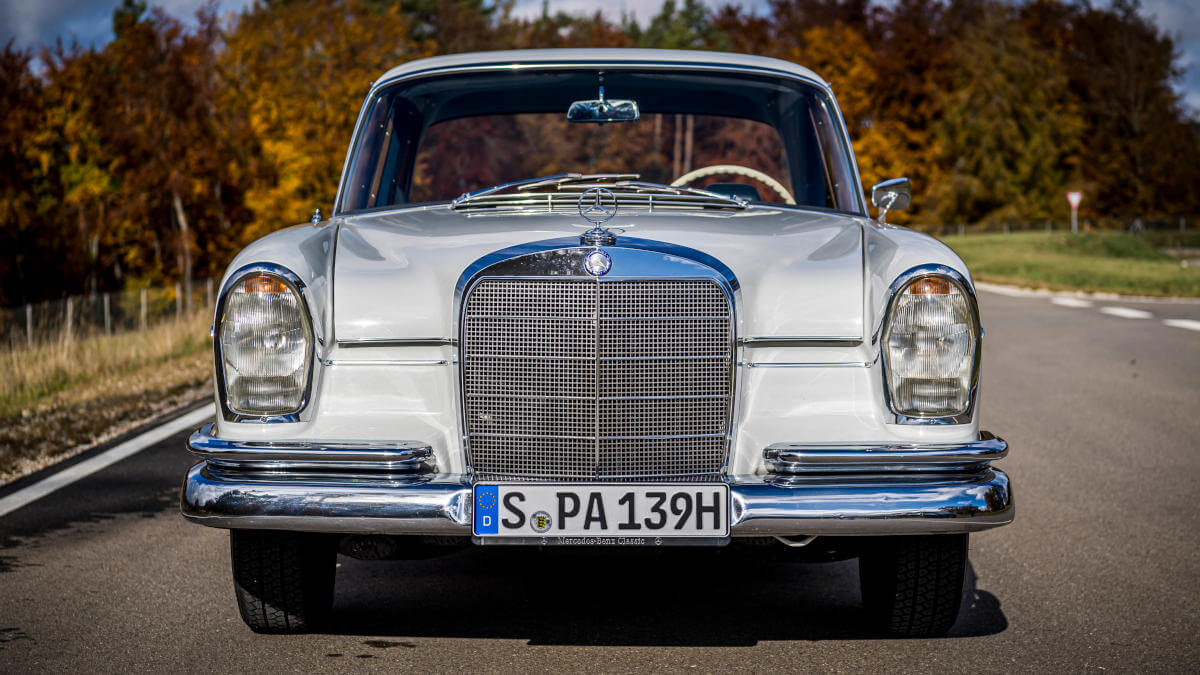



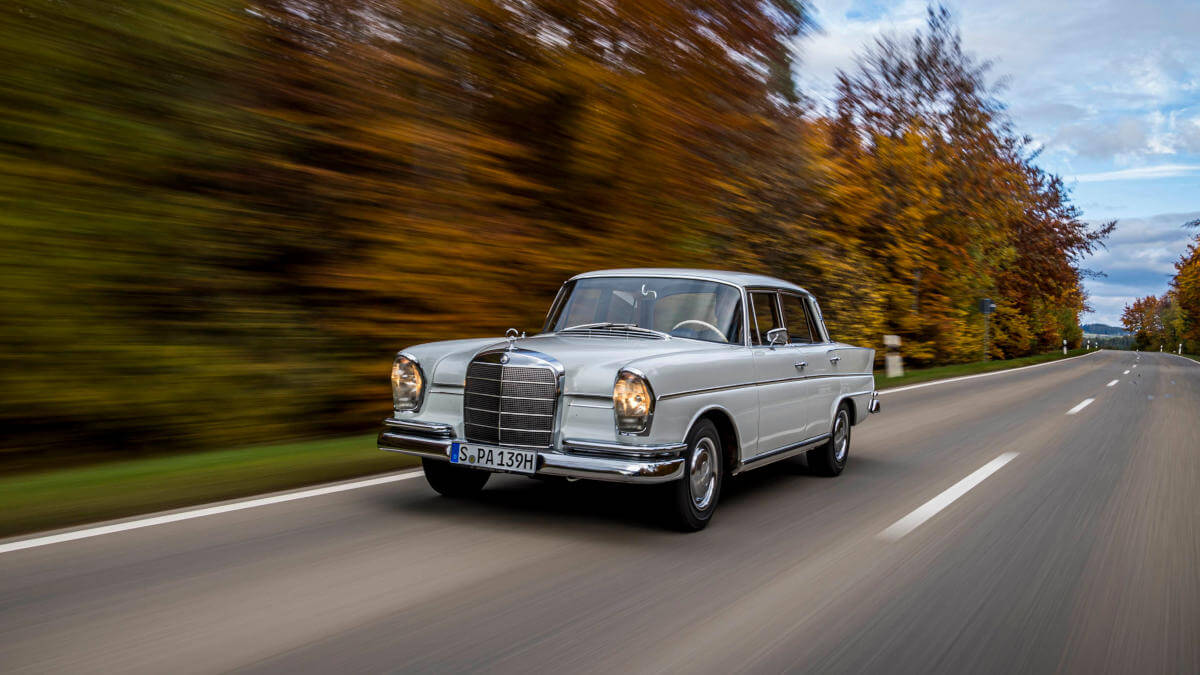



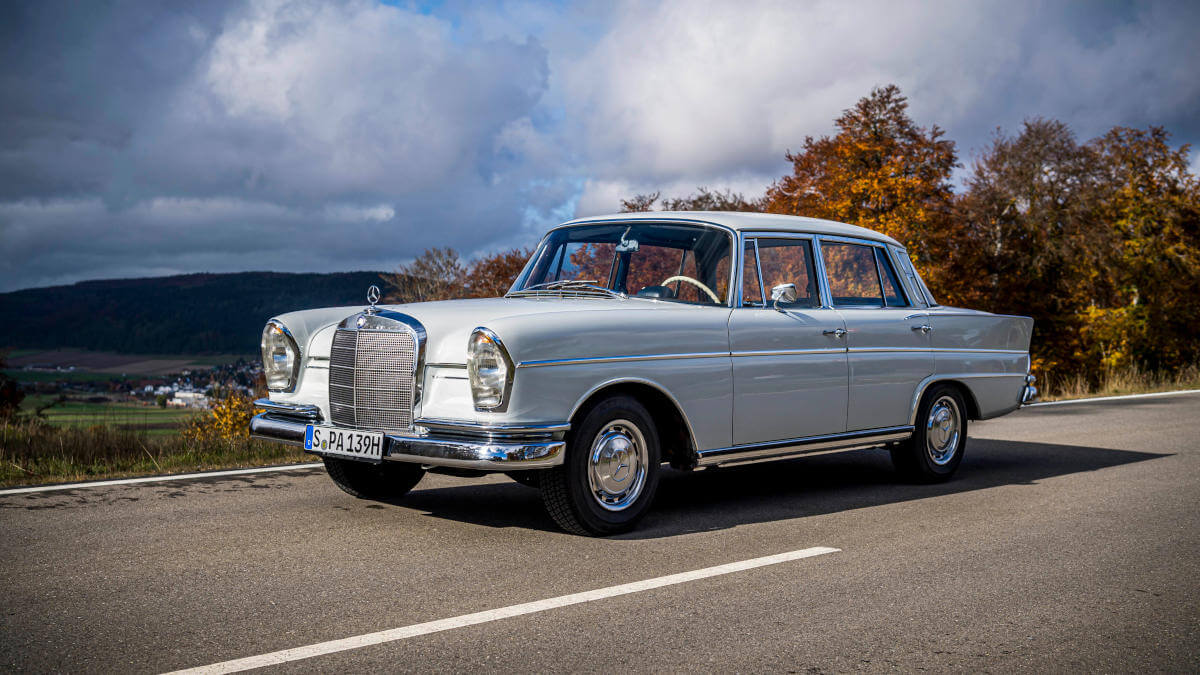



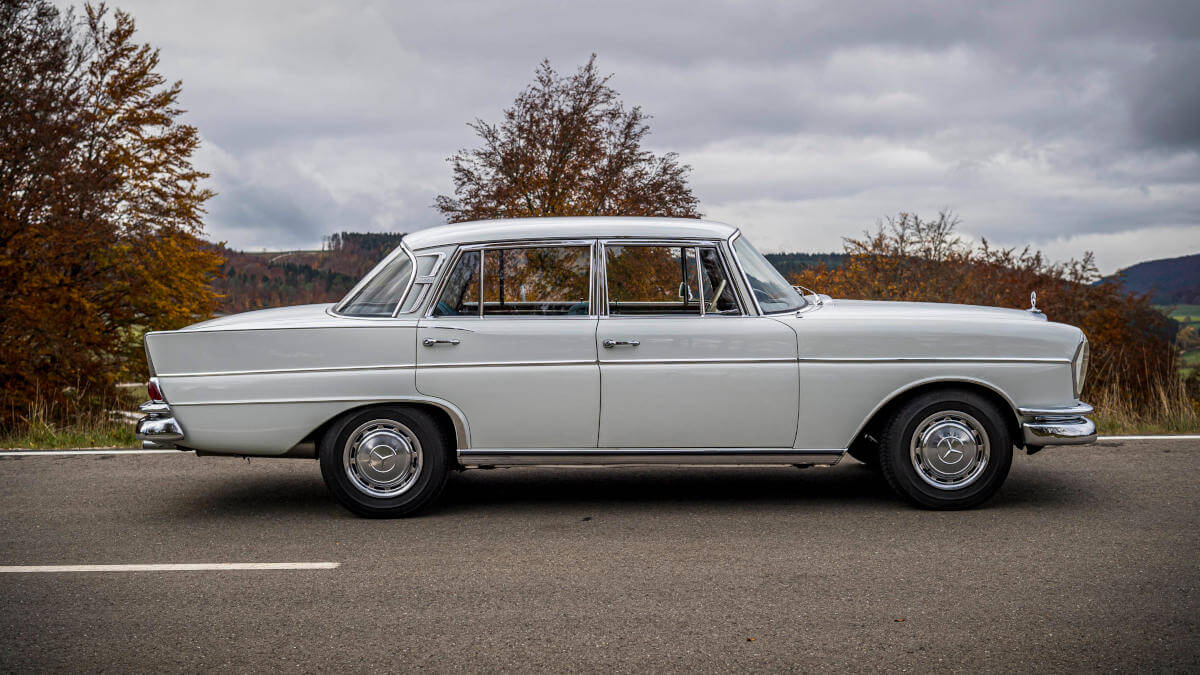



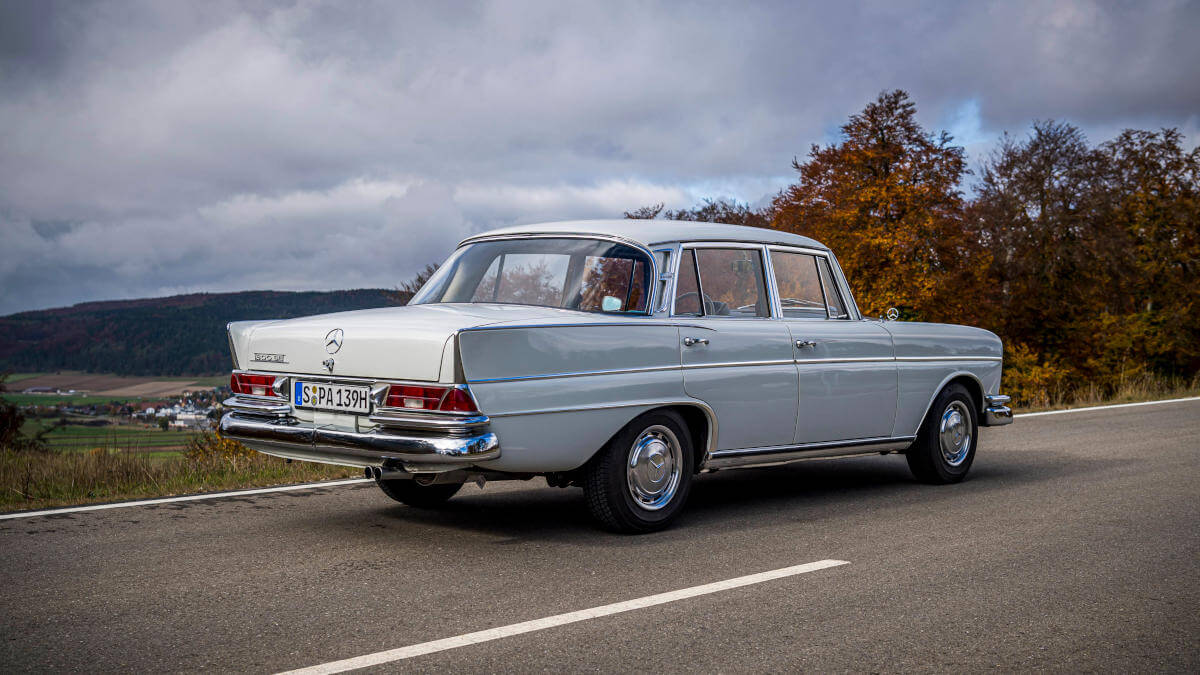



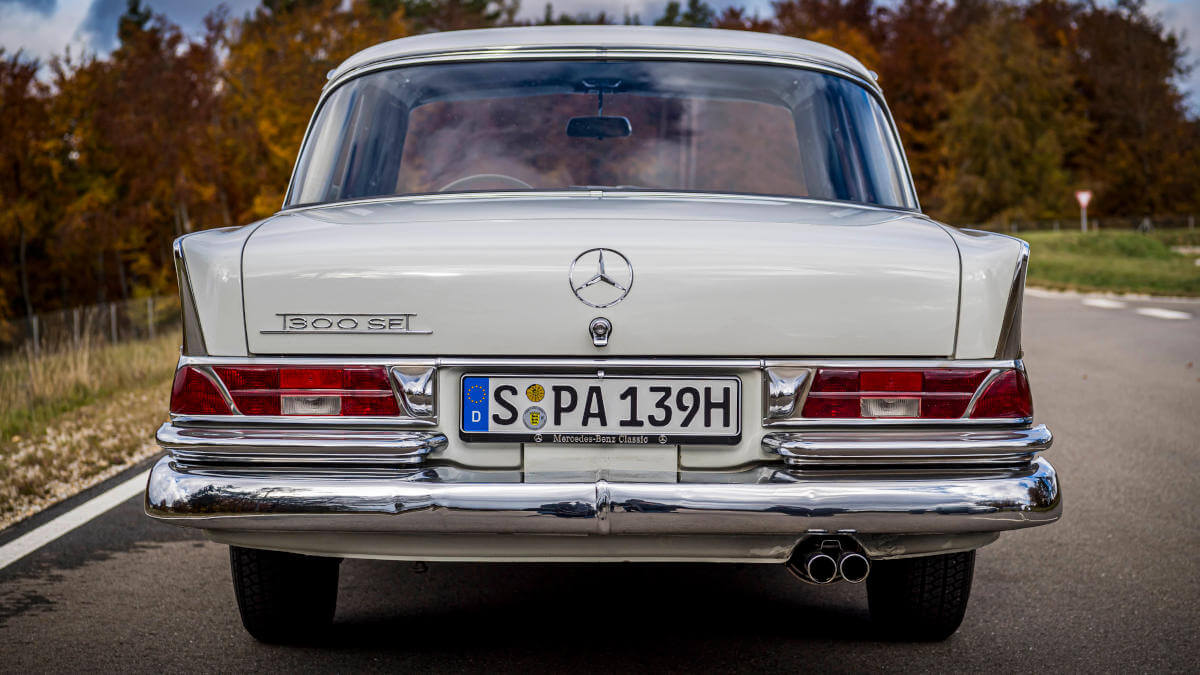



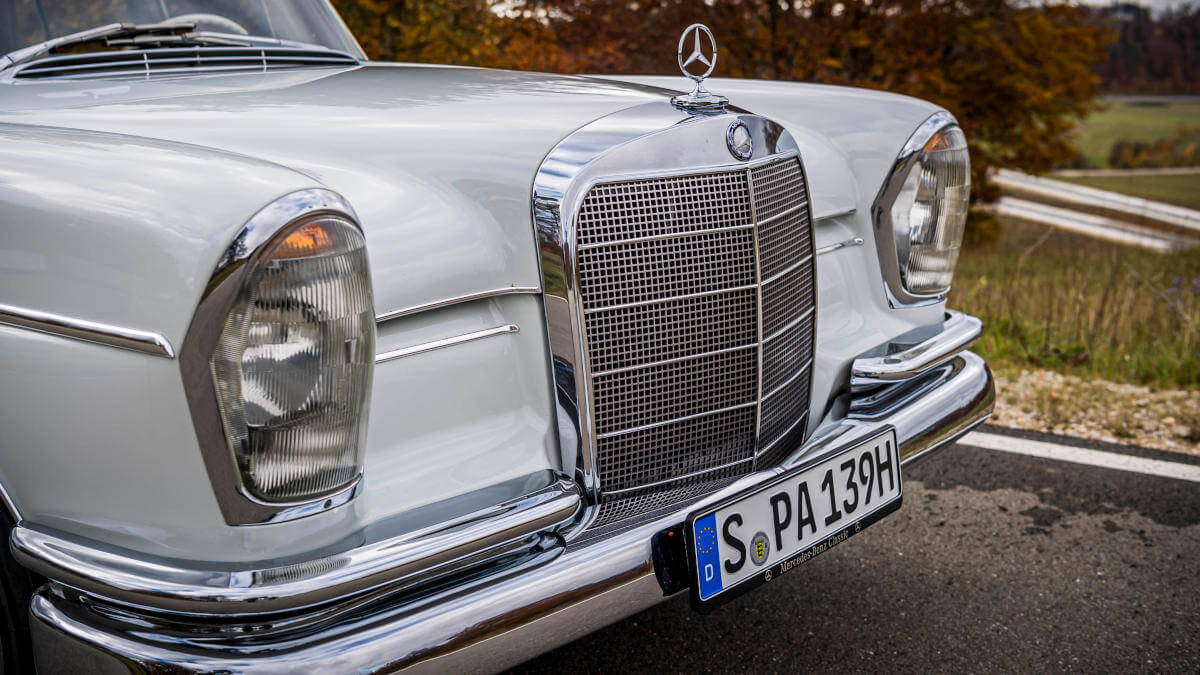



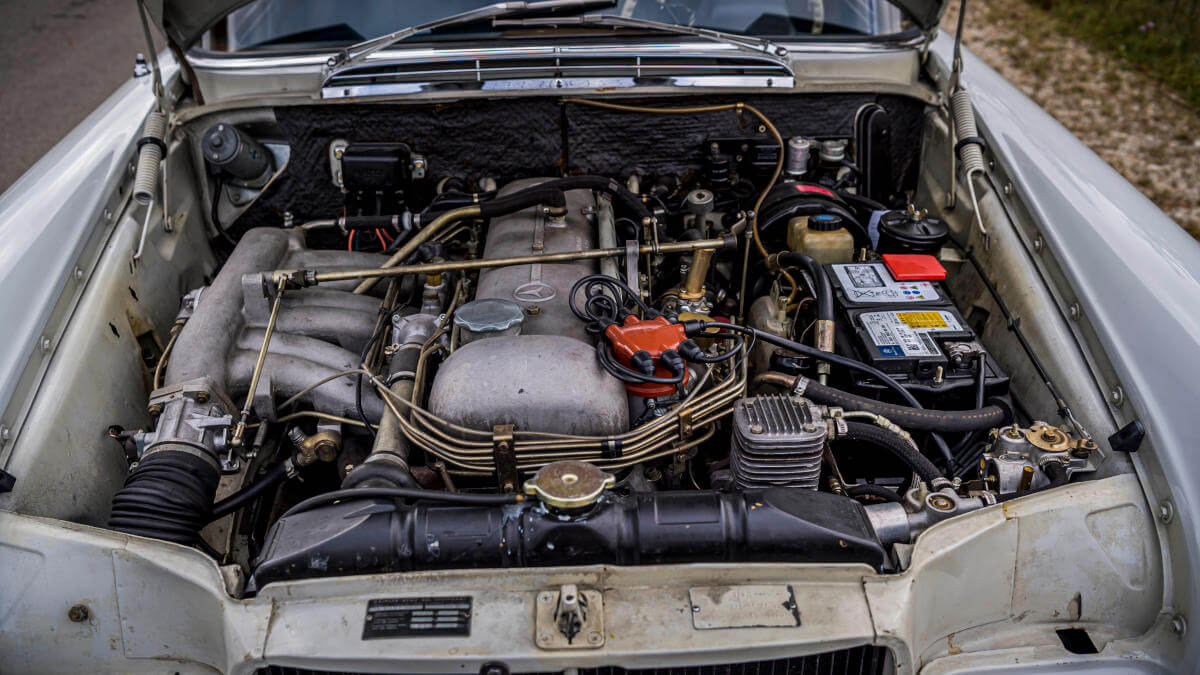



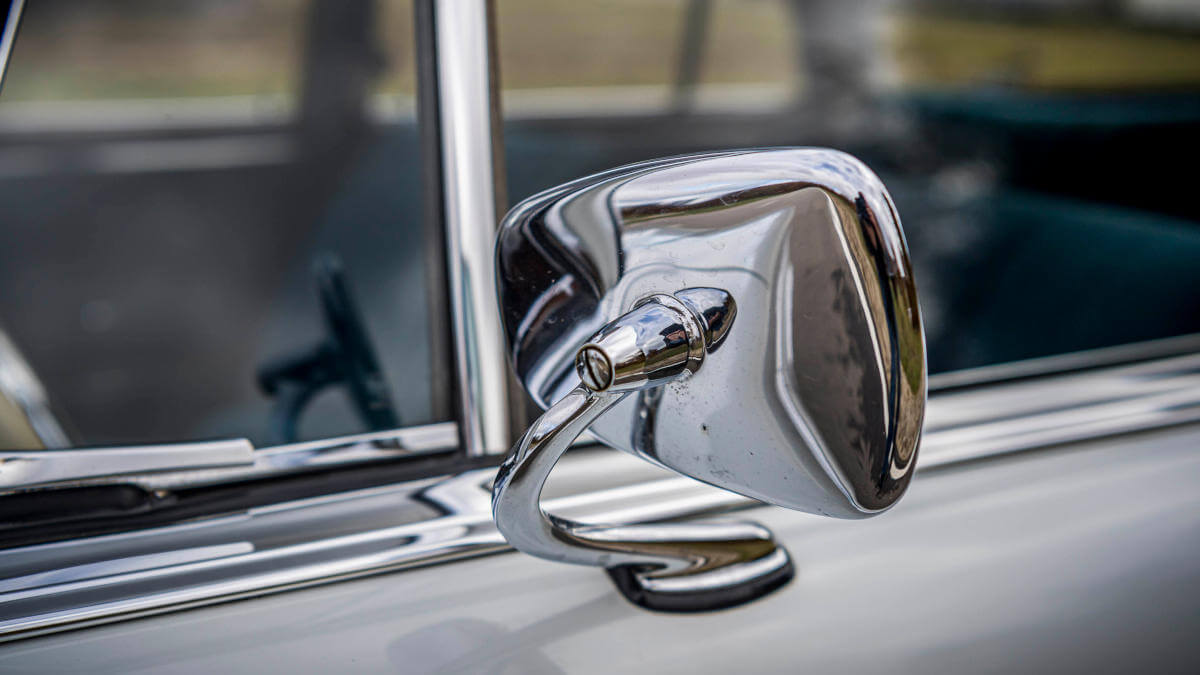



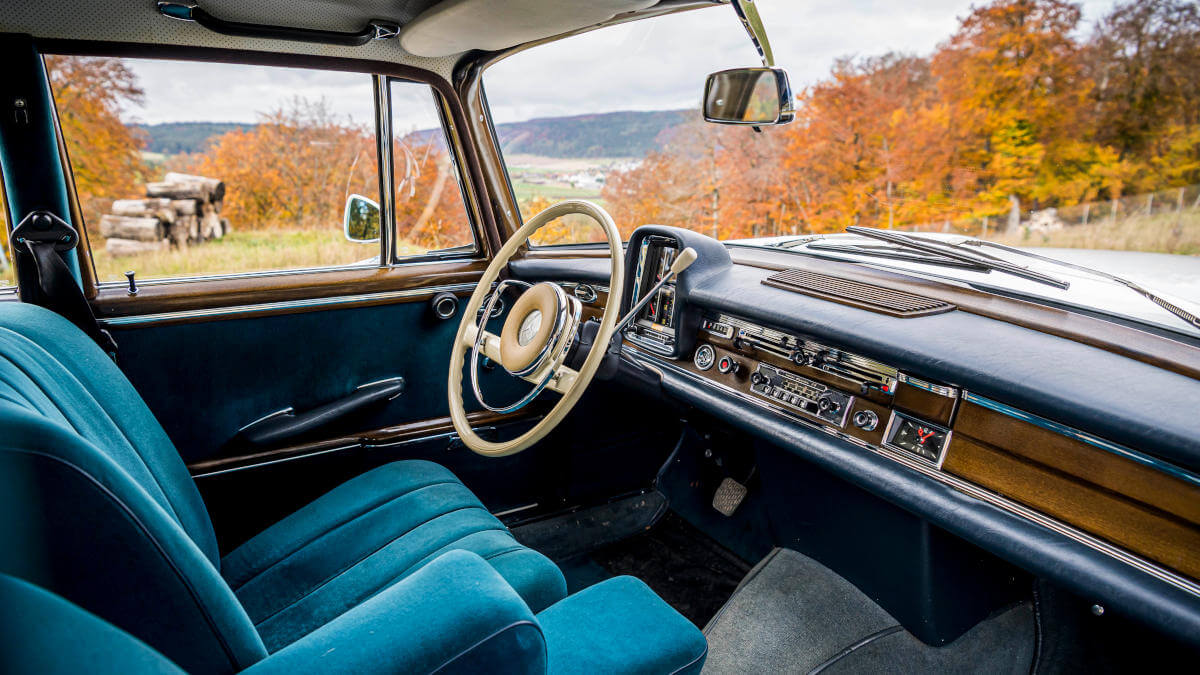



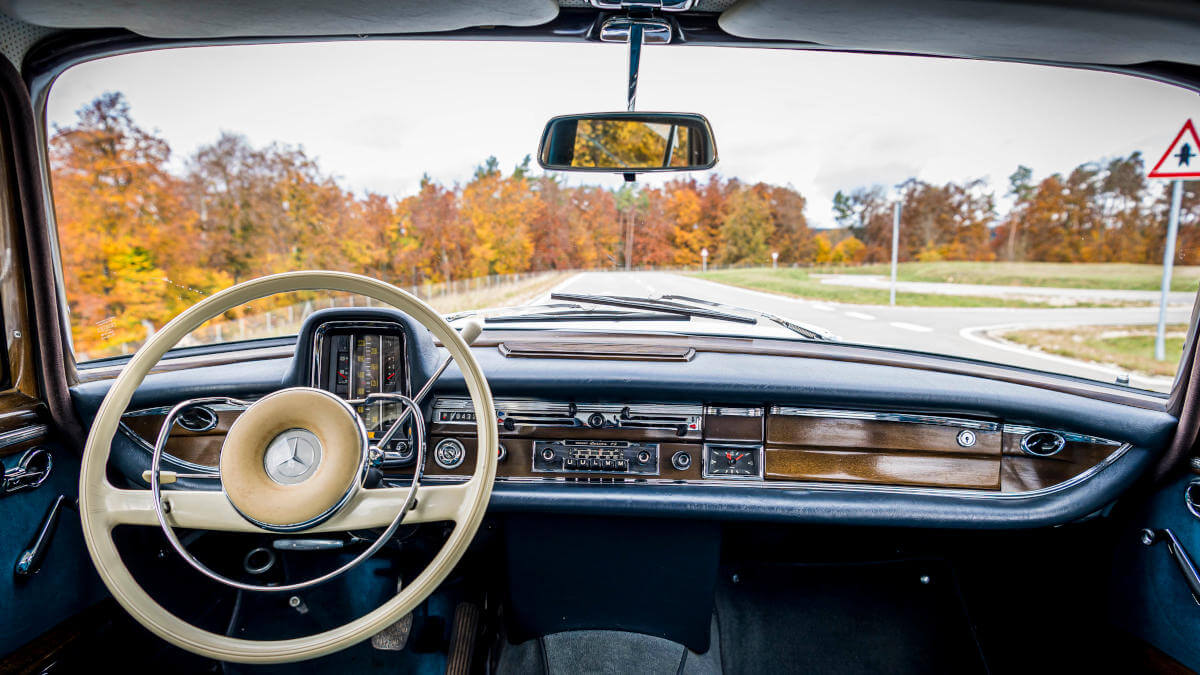



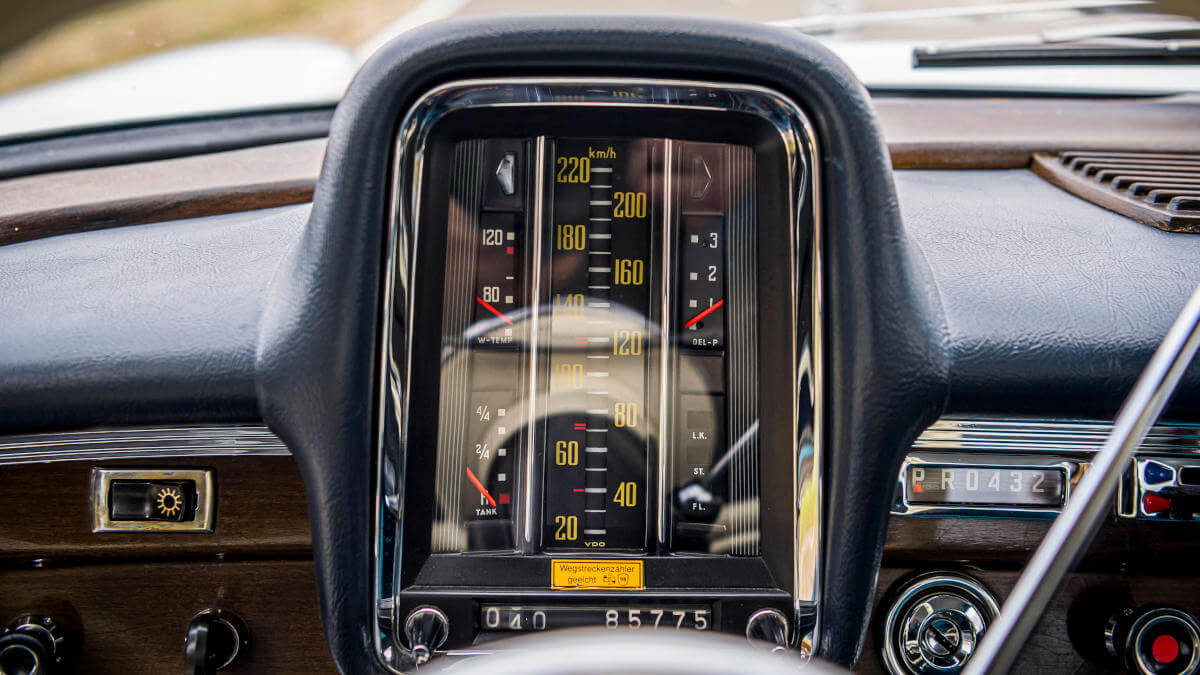



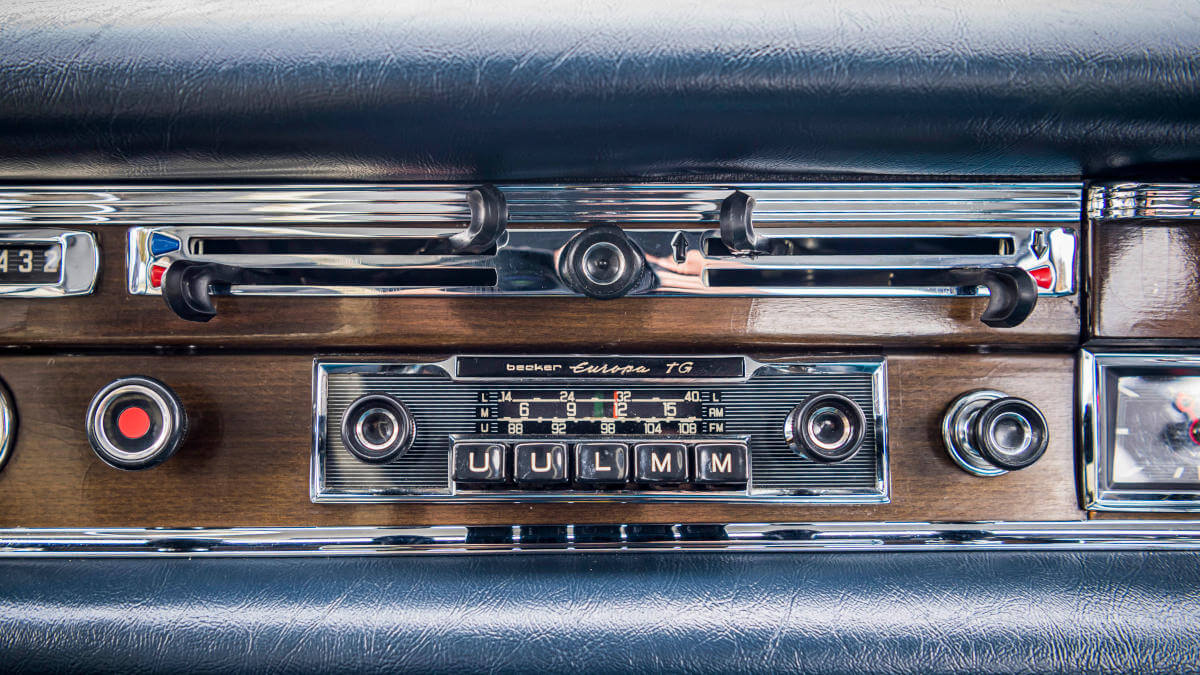



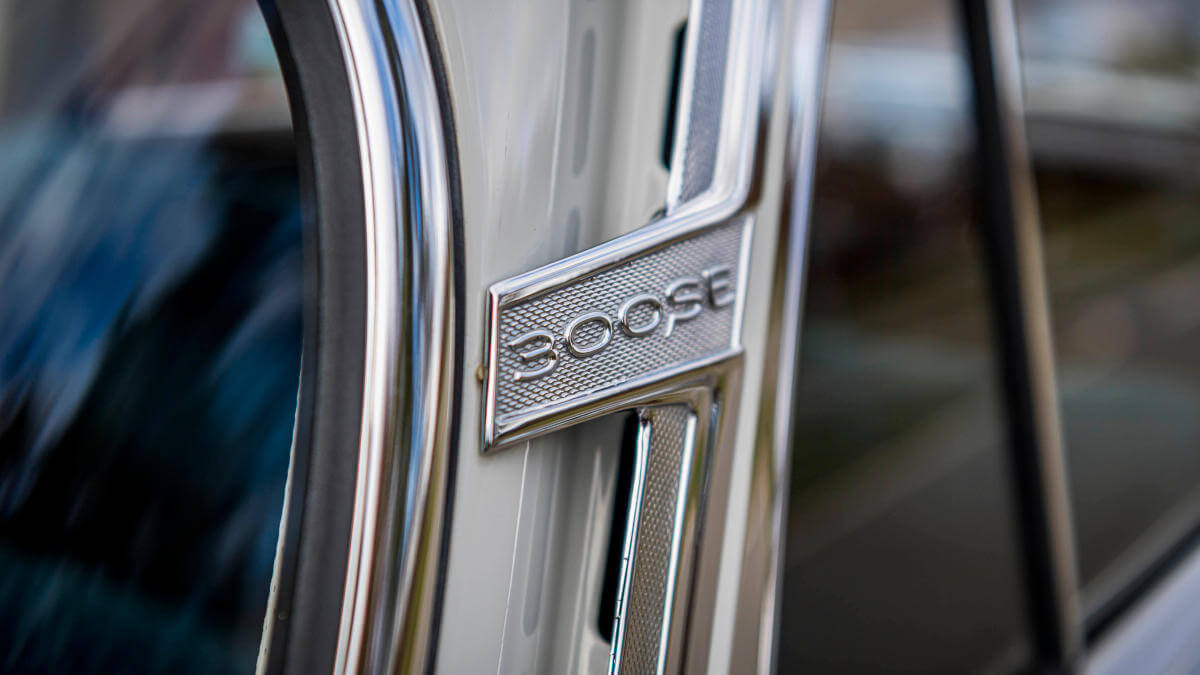



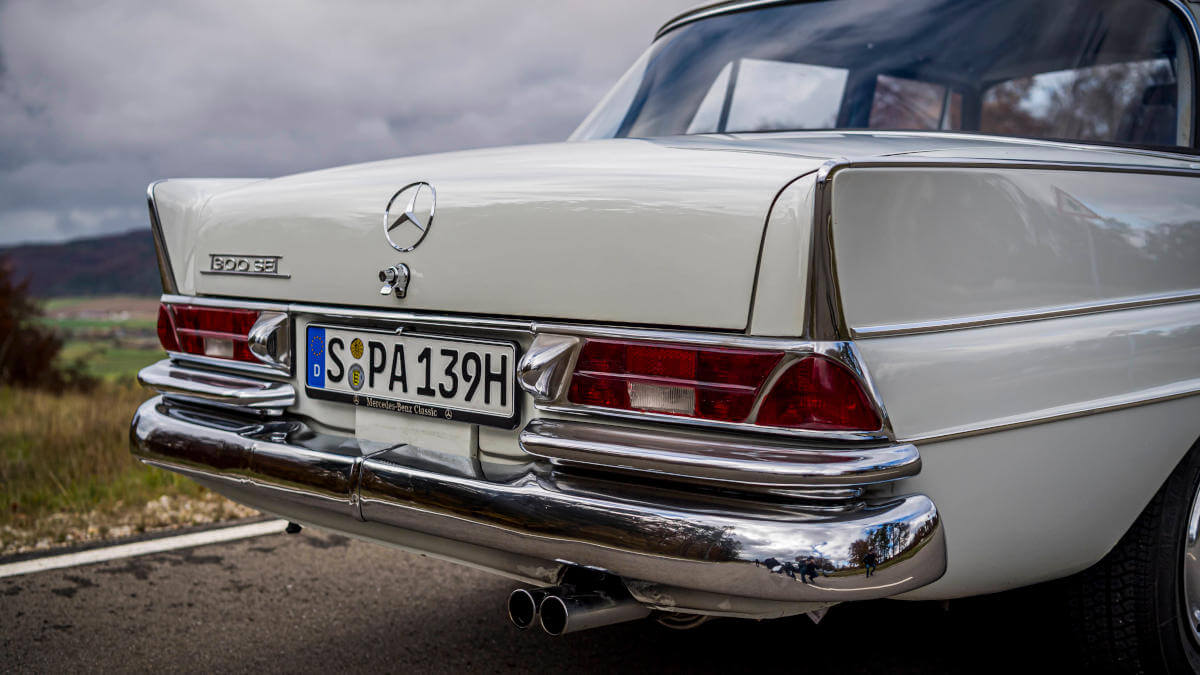



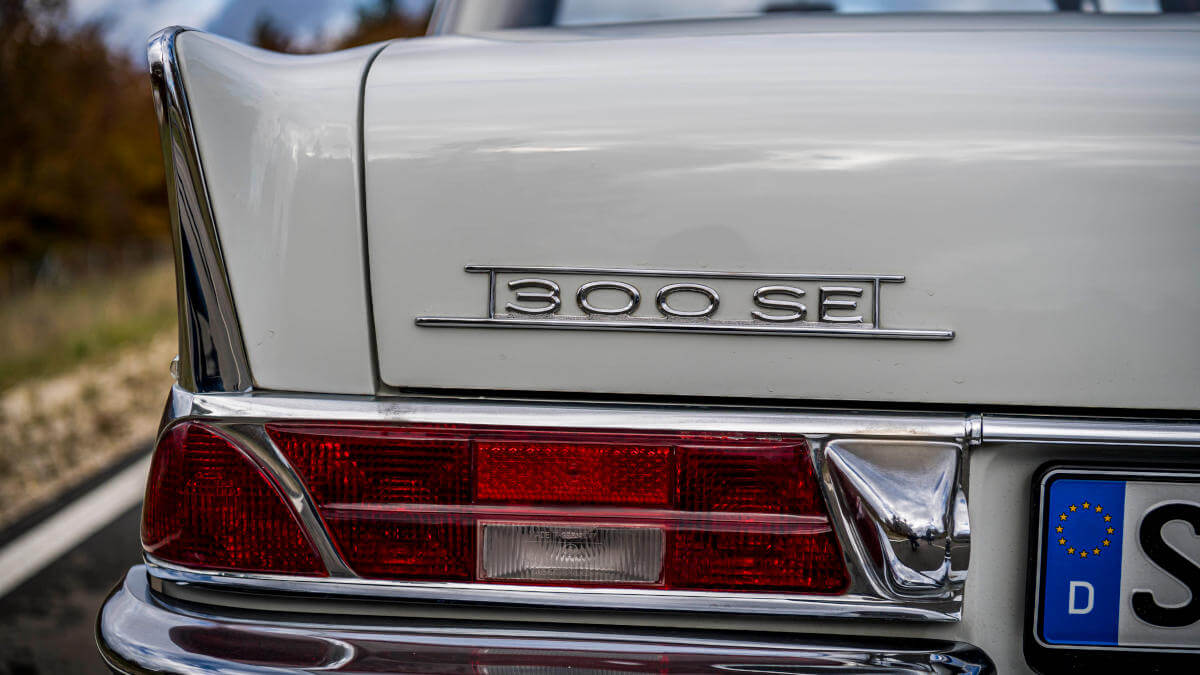



The W 111 marked the middle of three series that were equipped with the so-called standard body. This replaced the aging pontoon body of the predecessor models. It was designed with a slightly American-influenced styling with small tail fins above the rear lights. With a 14.5 centimer shorter front end, the ‘small tail fin’ model W 110 joined it beneath and, from 1961, the W 112 with air suspension instead of coil springs marked the upper end of the range. It was optically identical to the W 111.
Straight and vertical lines
The in-house design department headed by Karl Wilfert was responsible for the design of the W 111. They created a straightforward sedan with generous glazing including a panoramic rear window. In the front was the well-known chrome radiator grill with a star on it. The headlights also showed a vertical shape. This took up the dashboard arrangement with a central vertical speedometer scale in the interior. In addition, displays for tank capacity, oil pressure and water temperature were arranged. The comfortable front and rear seats were still without headrests.
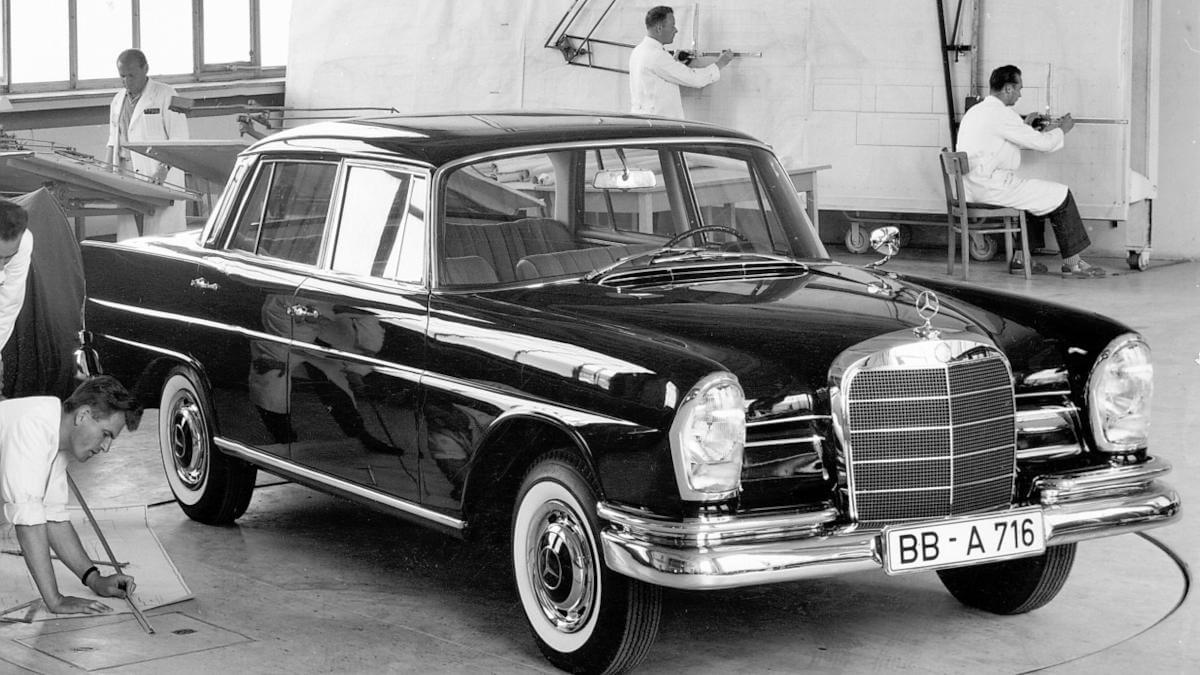



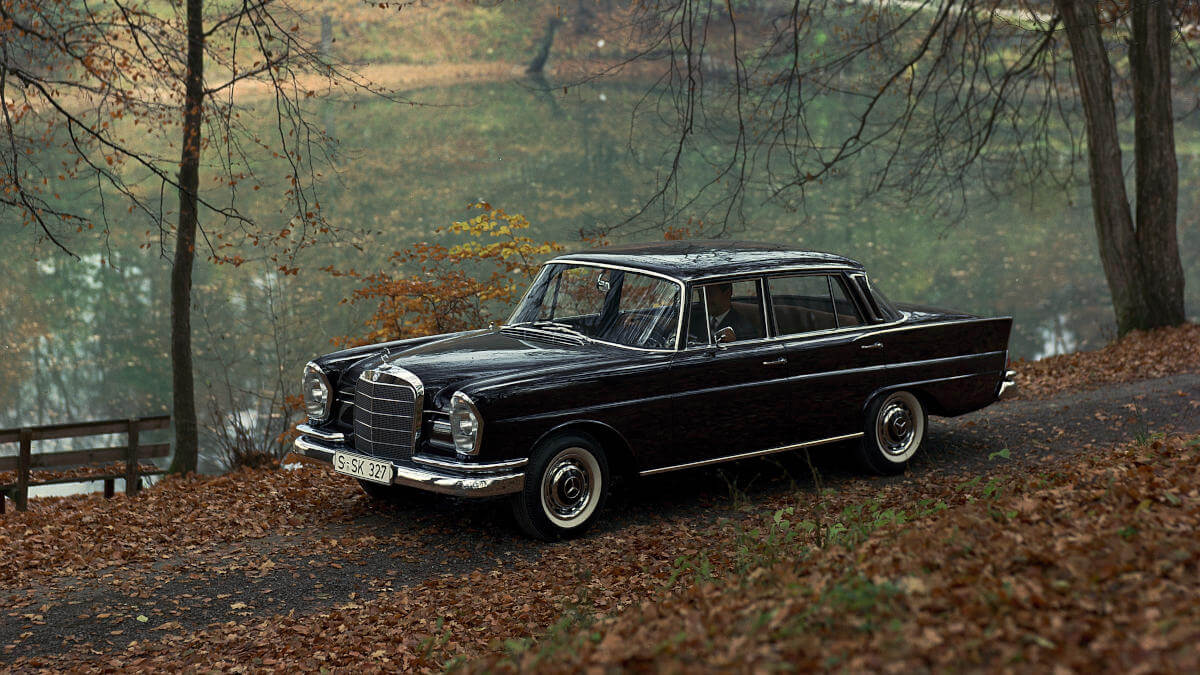



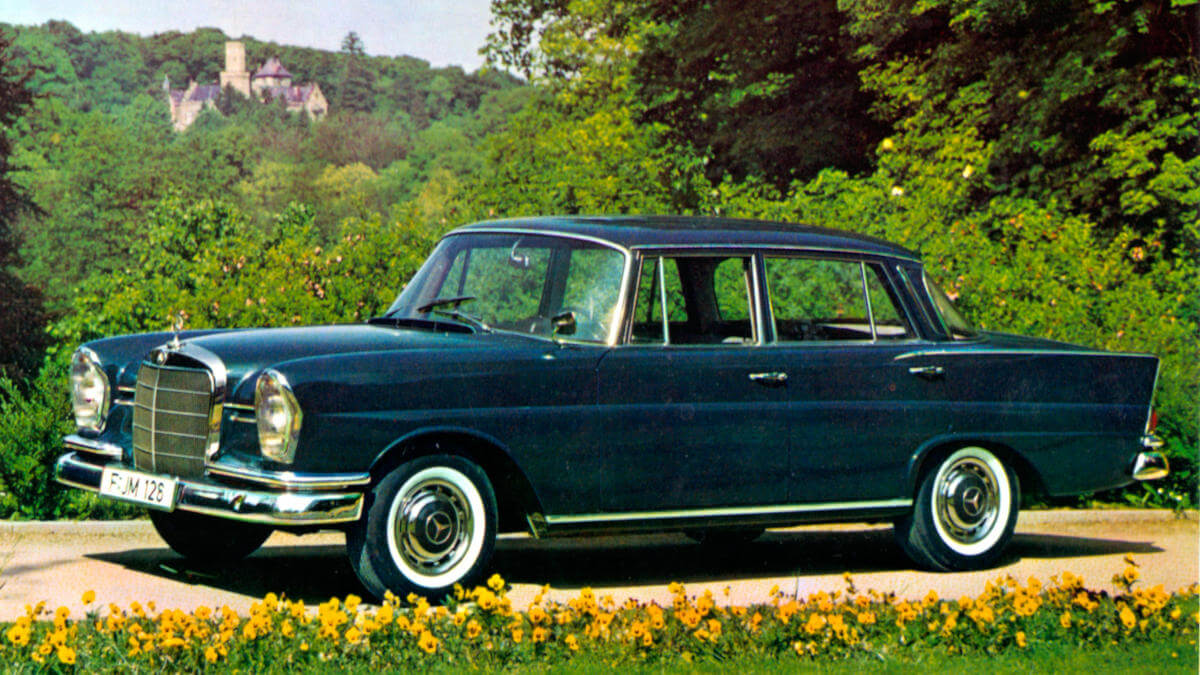



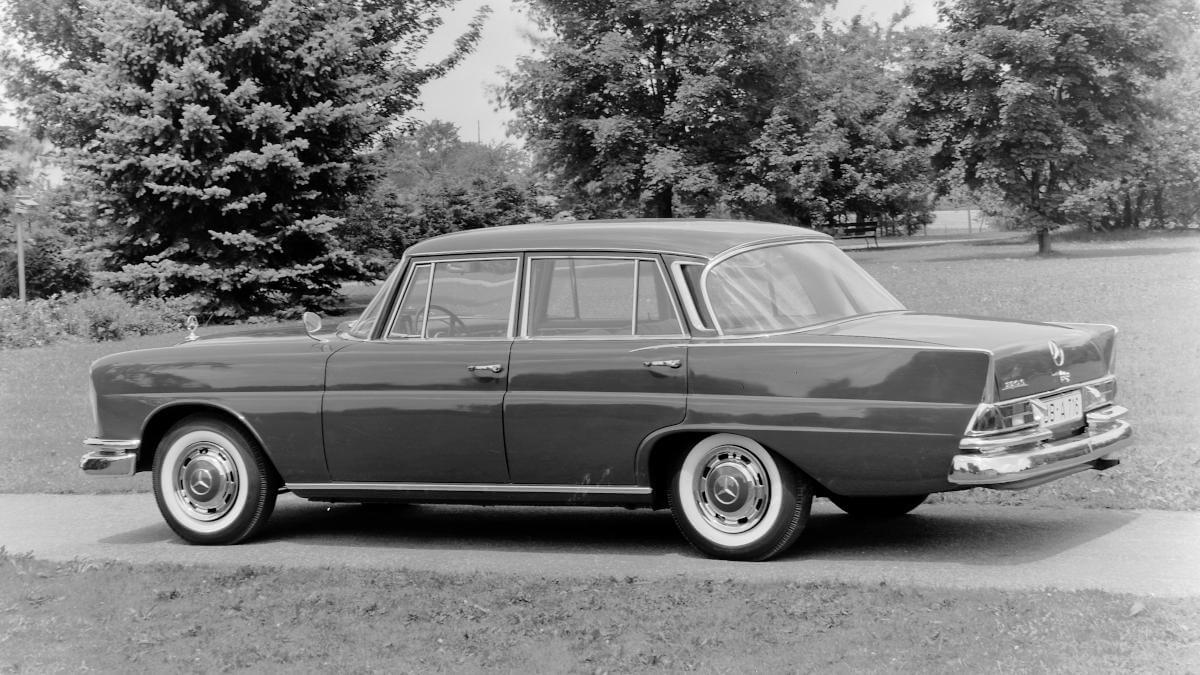



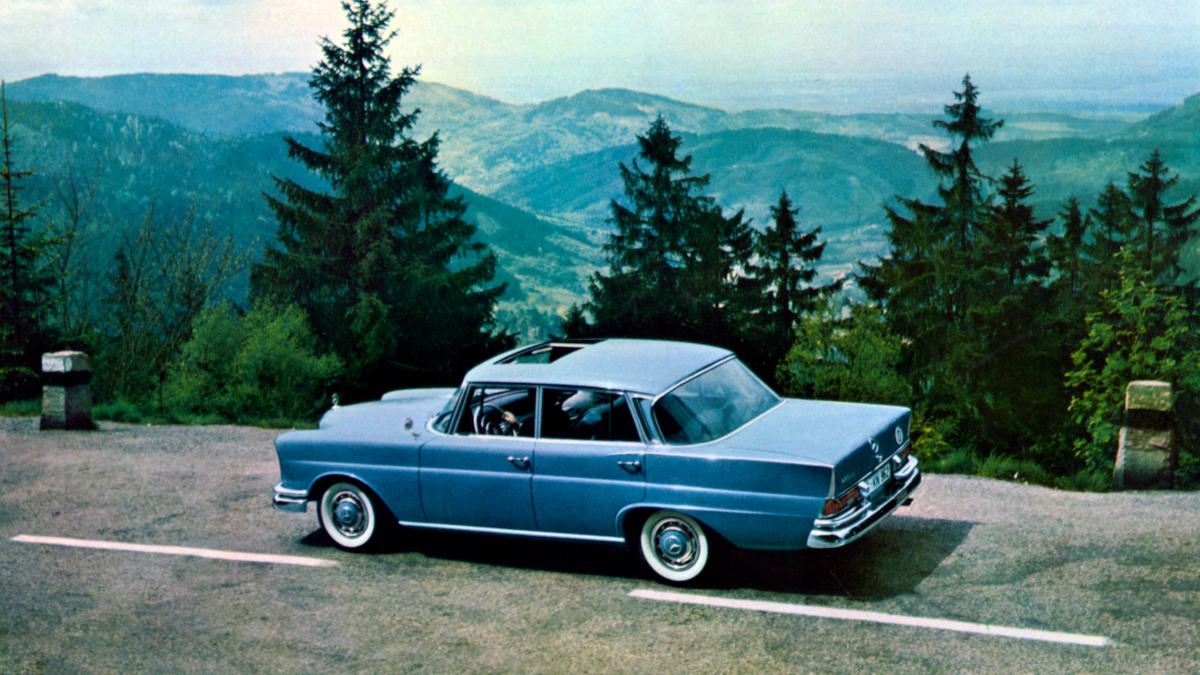



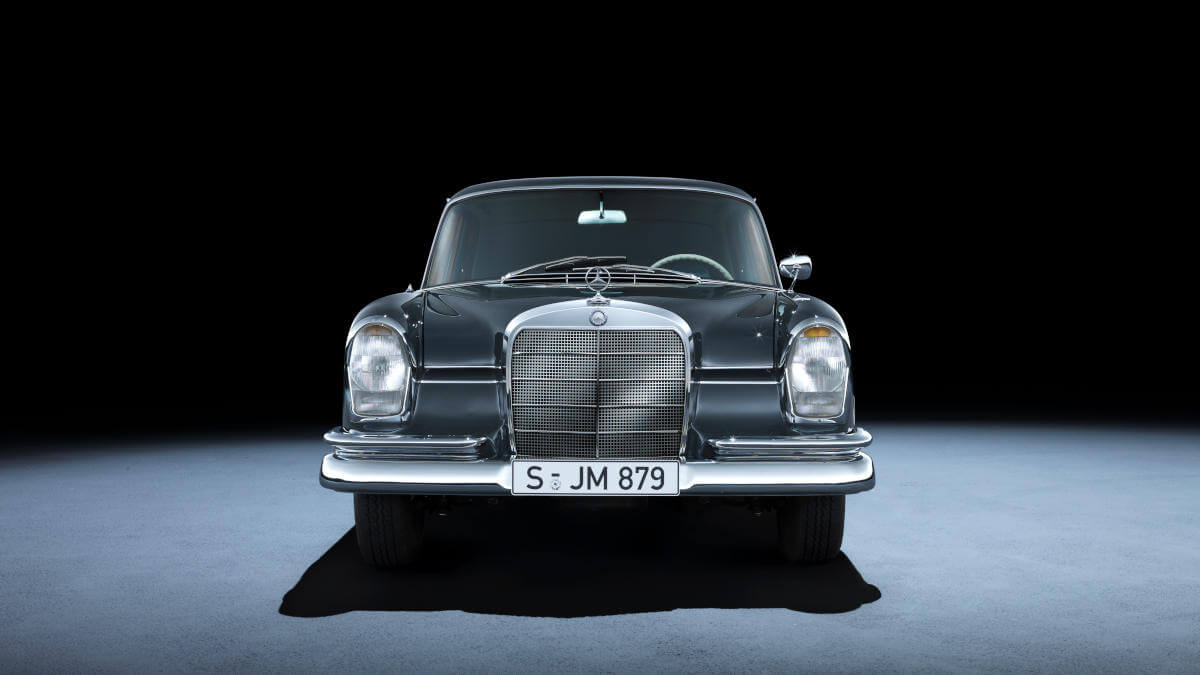



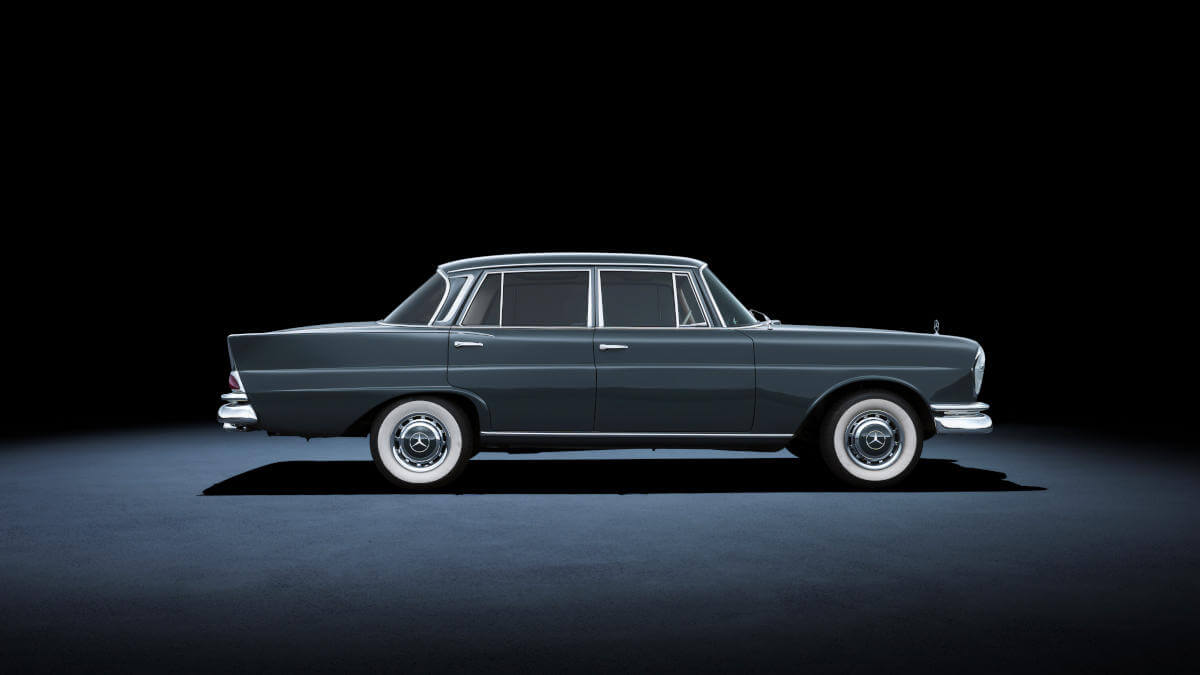



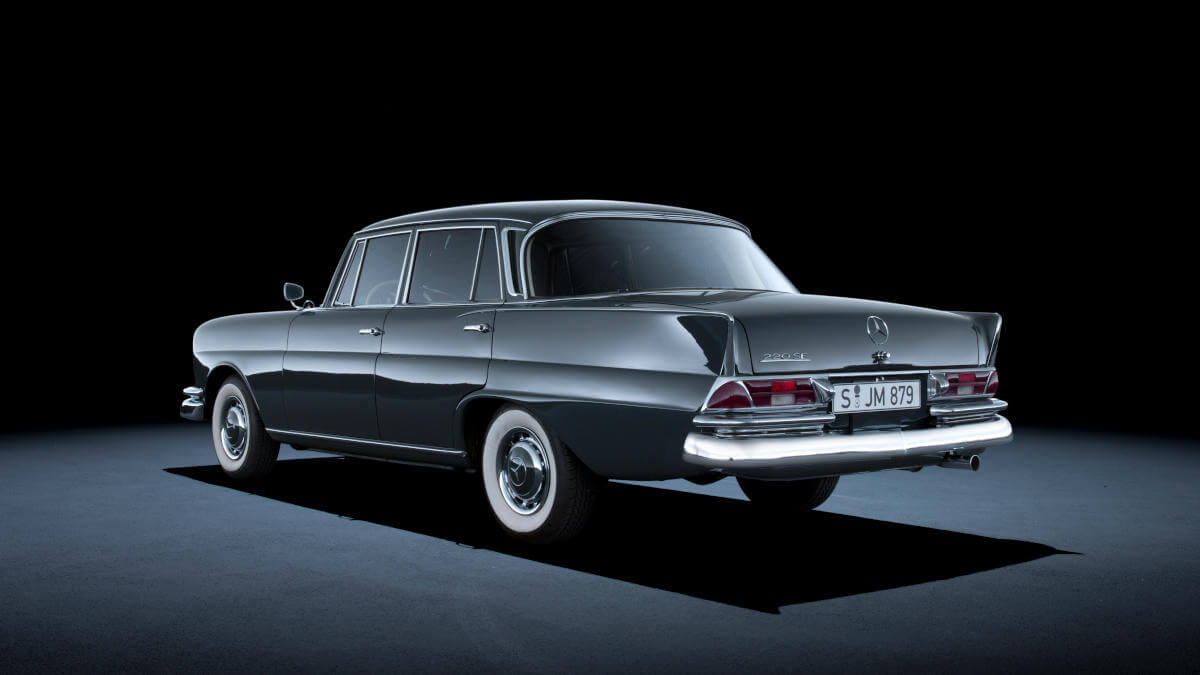



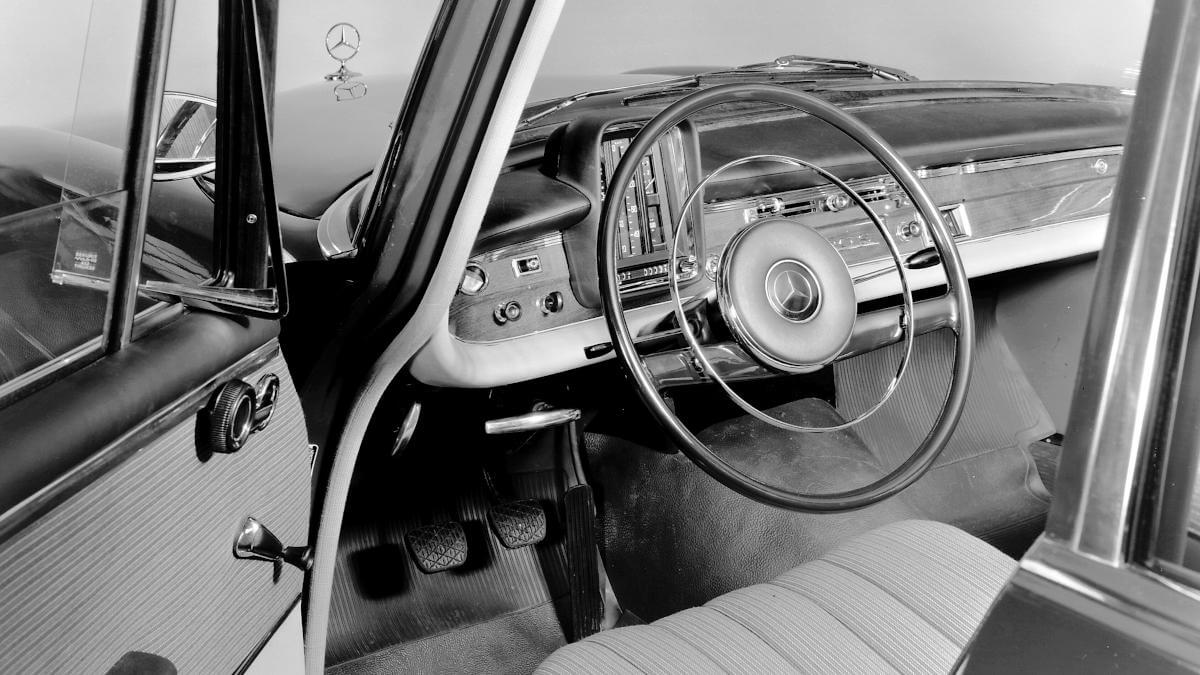



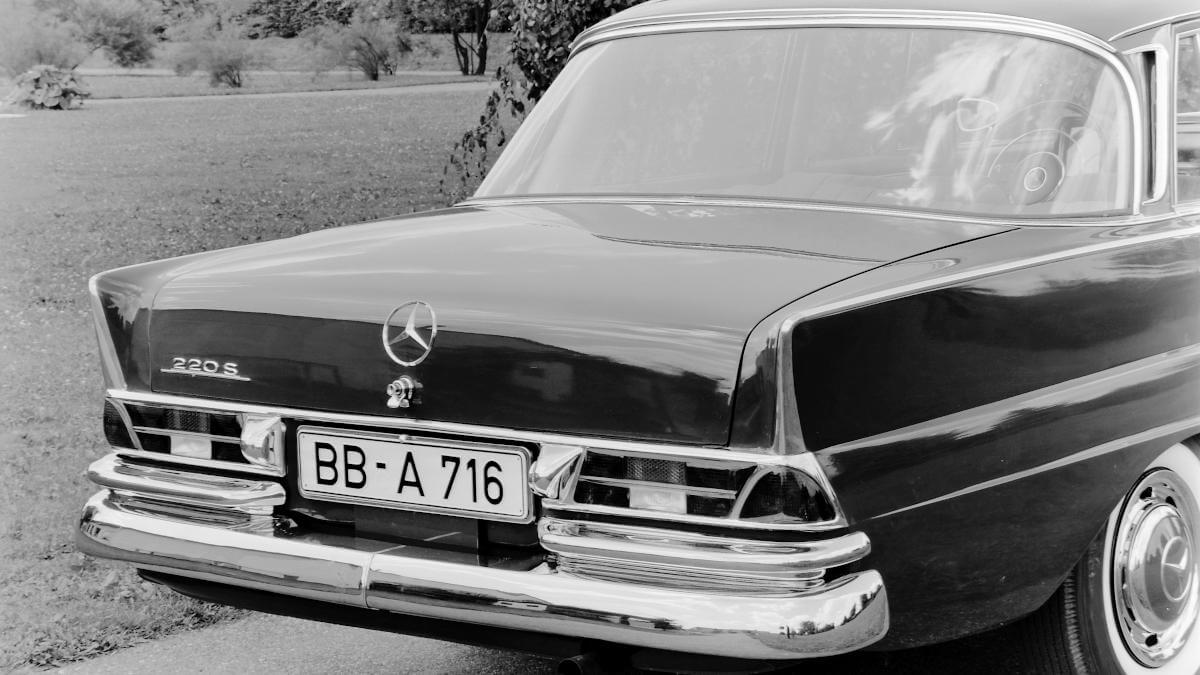



Various six-cylinder models
From August 1959, the 220b with 70 kW/95 hp, the 220 Sb with 77 kW/105 hp (later 81 kW/110 hp) and the 220 SEb with 88 kW/120 hp were available, each with inline six-cylinder engines. The 220 SEb already had a mechanical injection pump from Bosch instead of carburetors. In 1965, the 230 S with 88 kW/120 hp replaced the previous engine variants. Above that, the W 112 ranked as the 300 SE with initially 118 kW/160 hp. From 1964 the power climbed to 125 kW/170 hp. The top model could be recognized from the outside by a chrome framed model lettering on the trunk lid. It was also available with two different wheelbases. The shorter one had another 300 SEL lettering on the C-pillars.
Occupant safety in focus
As already mentioned at the beginning, the W 111 and W 112 at Mercedes-Benz focused on the issue of occupant safety. During the basic development of the car, various findings of the engineer Béla Barényi were used. For the very first time, an integrated safety body with crumple zones at the front and rear was created. After this had already been checked for safety several times during prototype stage, the Daimler Group began crash tests on a large scale in 1959. Initially, a hot water rocket was used to accelerate the cars. Through the pressure of the water vapor it pushed the vehicle to a desired speed and then stopped on its rail. The accidents were simulated against other cars, buses, trucks and walls, as well as rollovers via ramps. In this way, in addition to crumple zones, wedge-joint door locks were created, which can be easily opened even after an accident. At the same time, they increase the stability of the passenger cell, as they prevent the doors from springing open in the event of an accident and thus also prevent passengers from being thrown out.
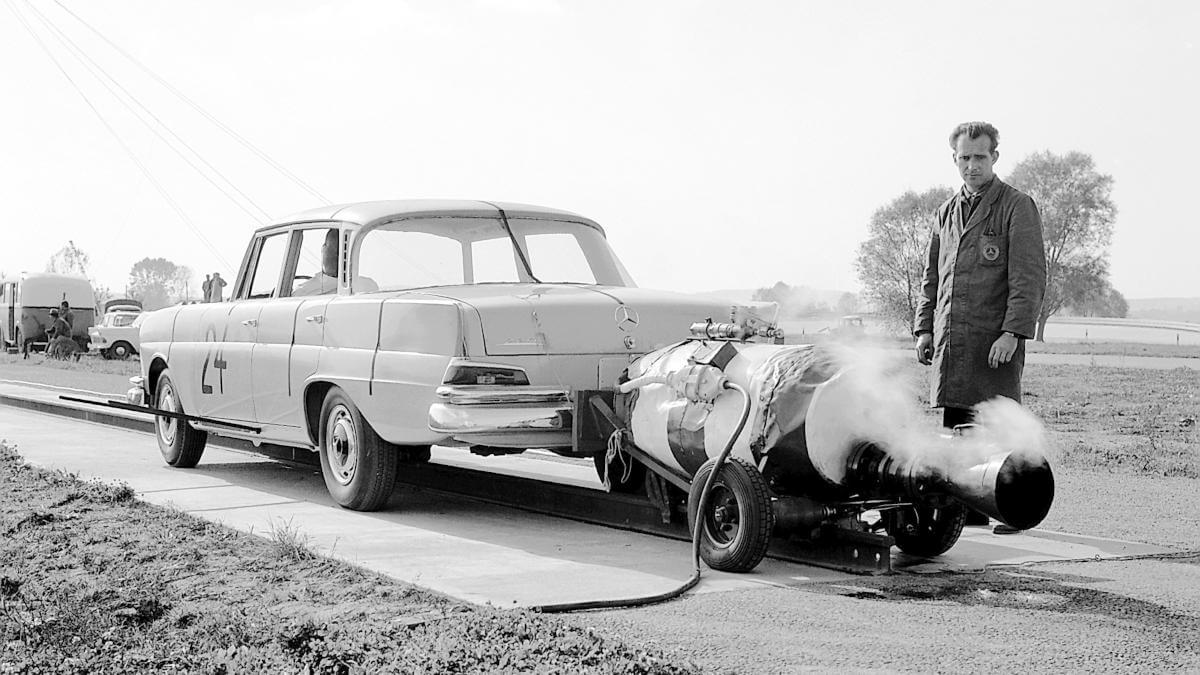



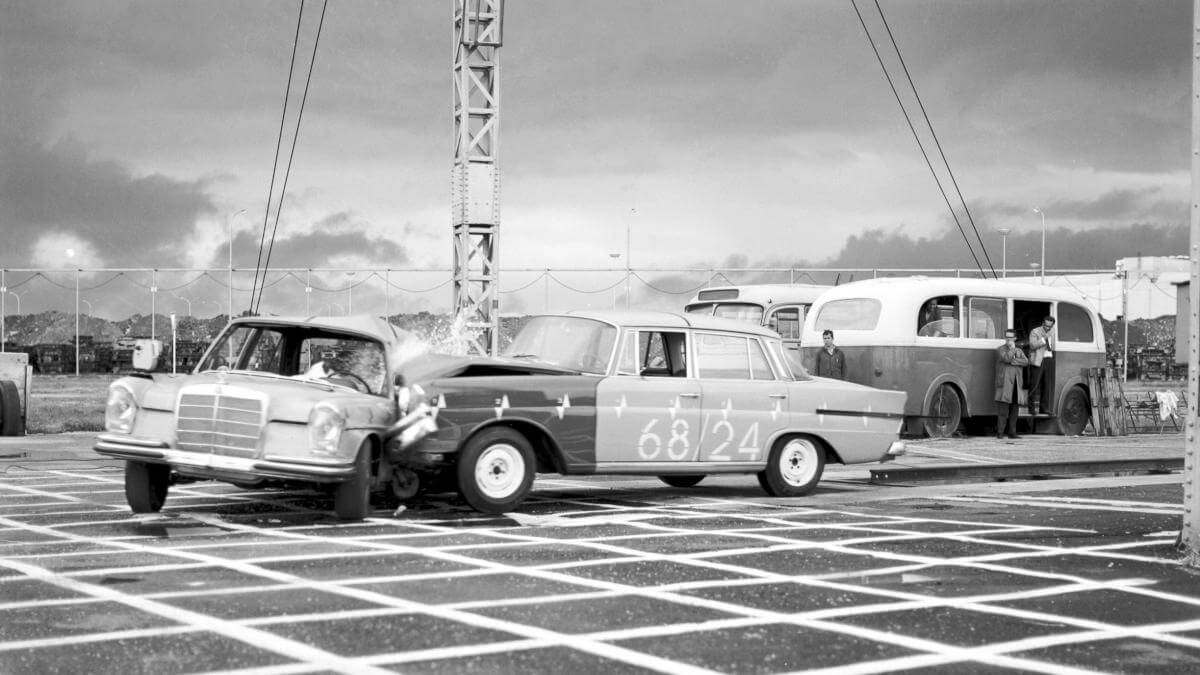



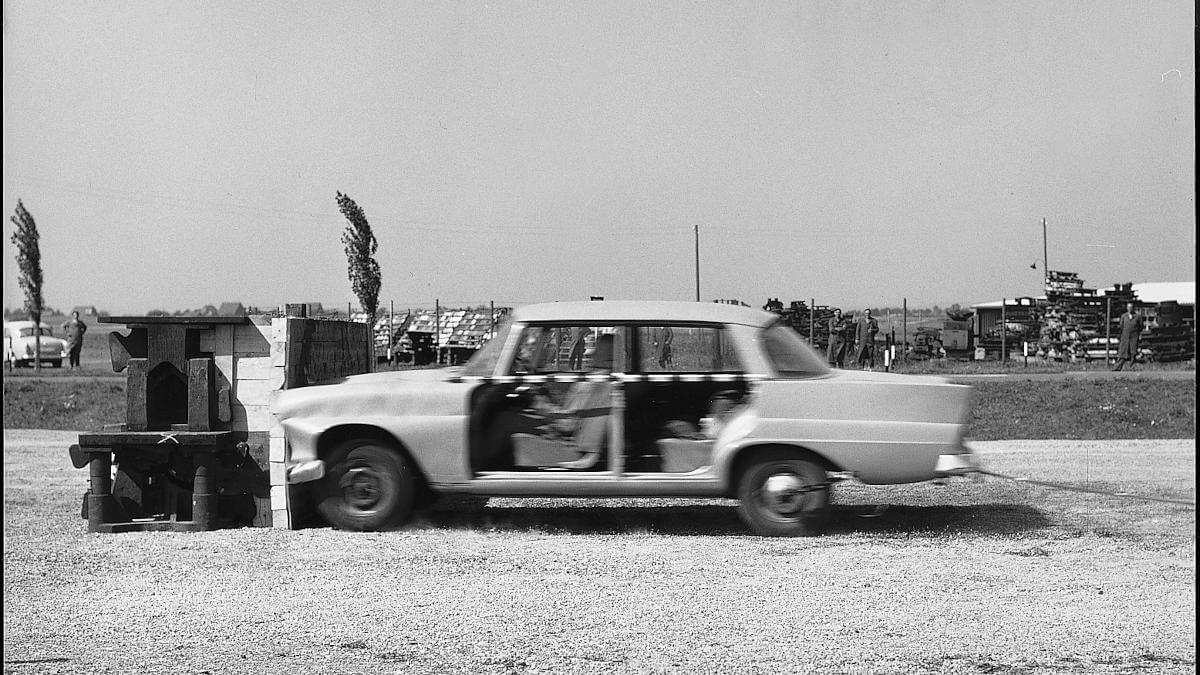



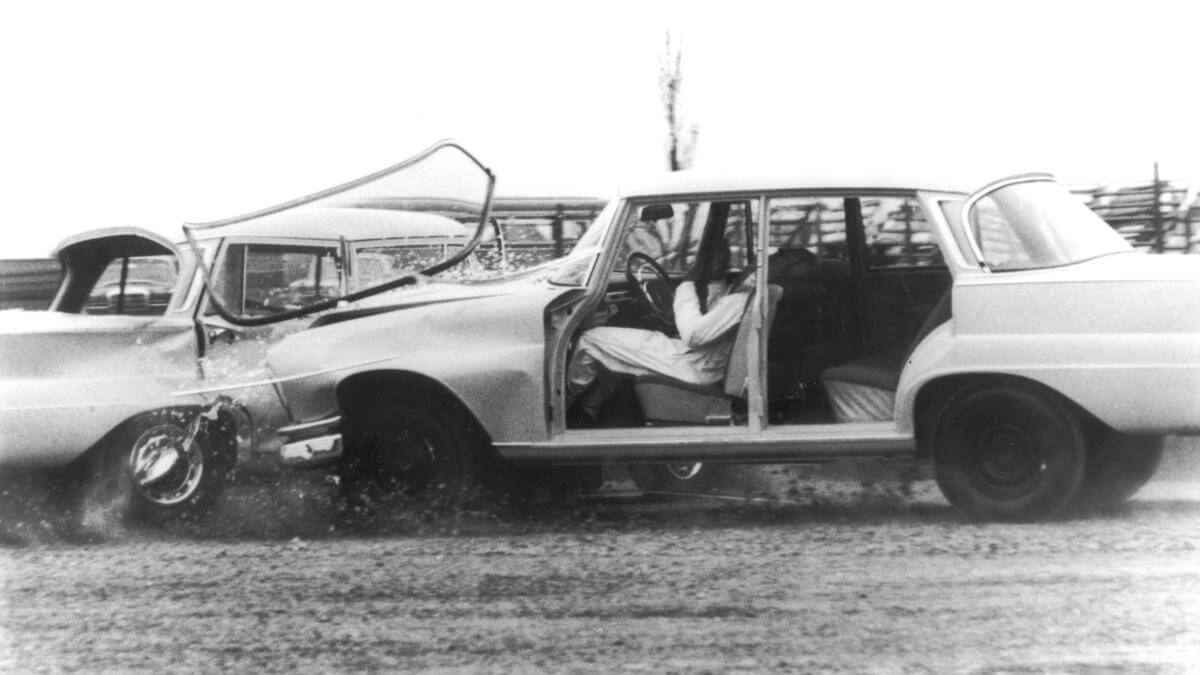



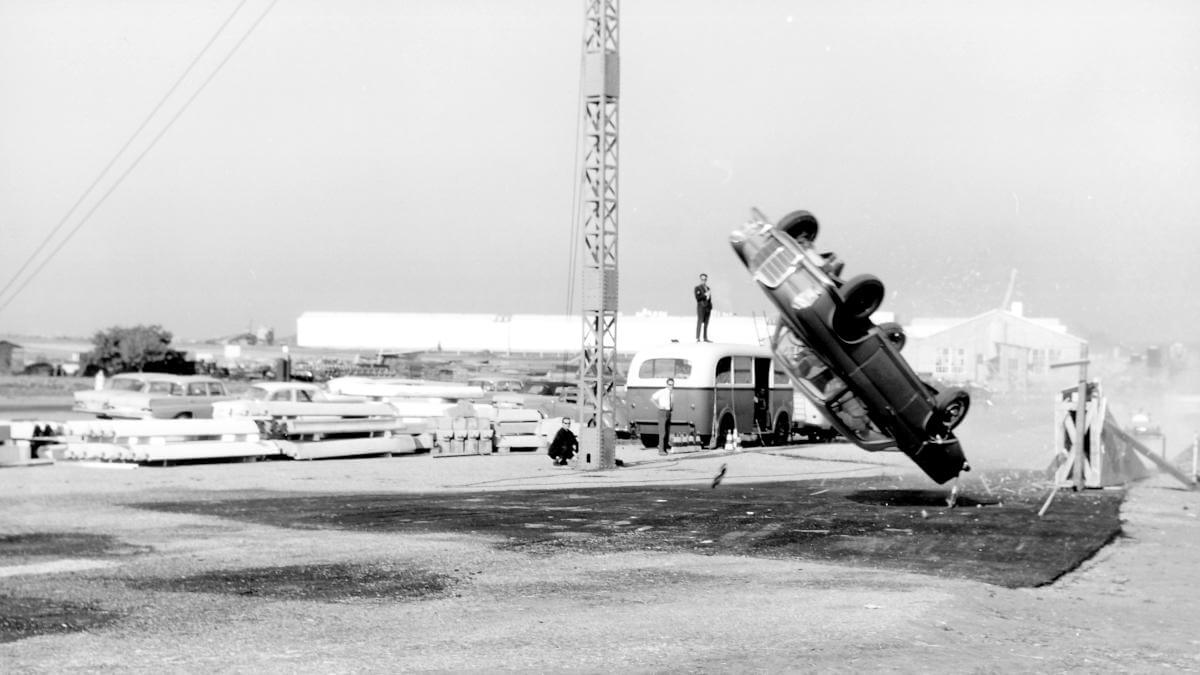



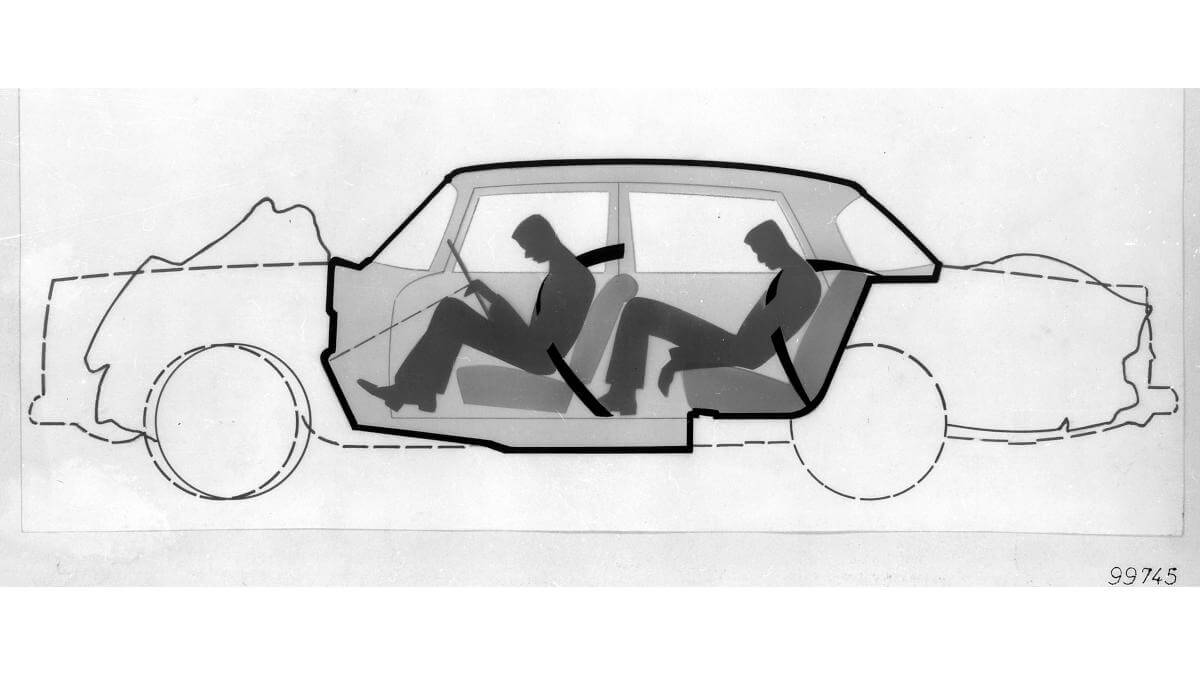



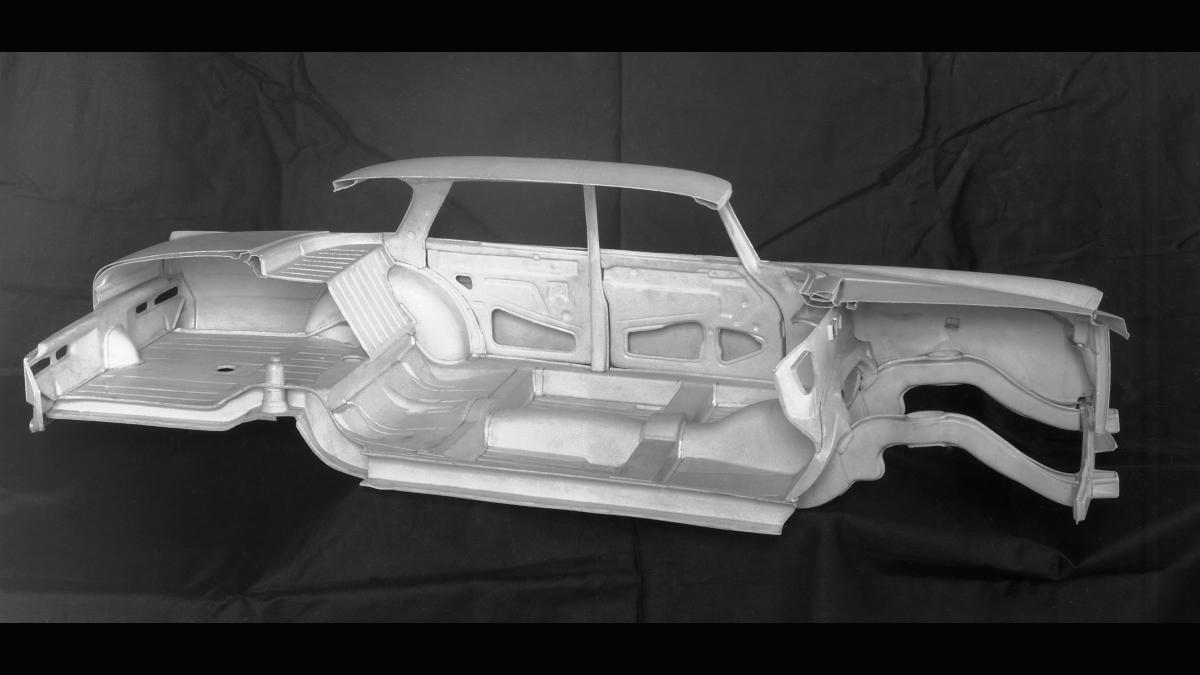



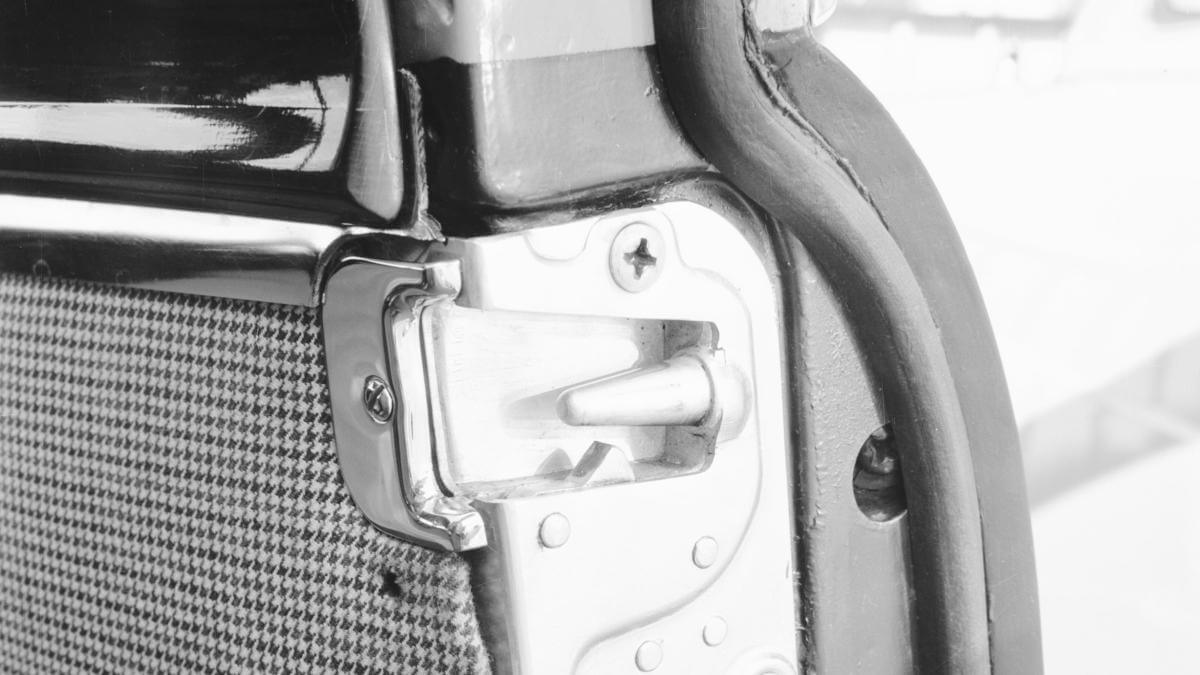



Other body variants
In addition to the classic sedan, Mercedes-Benz also offered Coupés and Cabriolets from early 1961. Although these were based on the uncut platform of the sedan, they didn’t share a single sheet metal part with it. At the rear, the tail fins were significantly smaller. In comparison to the four-door model, four times as many parts had to be made by hand for the Coupé and Cabriolet. This made the production process and thus also the vehicles almost twice as expensive. The model designation 220 SEb/C for the entry-level engine remained unique. For the first time in the history of the brand, it featured disc brakes on the front axle, which one year later were also mounted to the sedan. It was dropped in 1965 with the market launch of the larger 250 SE with 110 kW/150 hp as a Coupé and Cabriolet. The 230 was never available as a two-door. But from 1967 the 118 kW/160 hp 280 SE was added and two years later the V8 top model 280 SE 3.5 with 147 kW/200 hp. Why the top model had to carry a smaller number than the W 112 as a Coupé and Cabriolet (300 SE) can no longer be clearly proven.
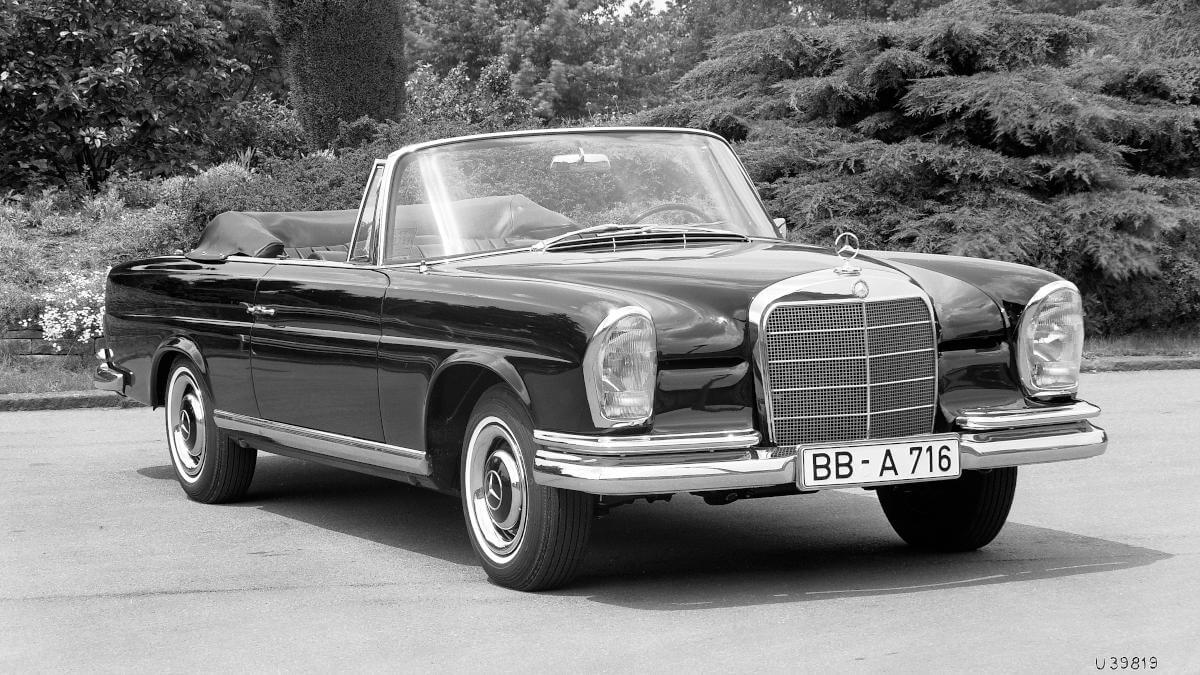



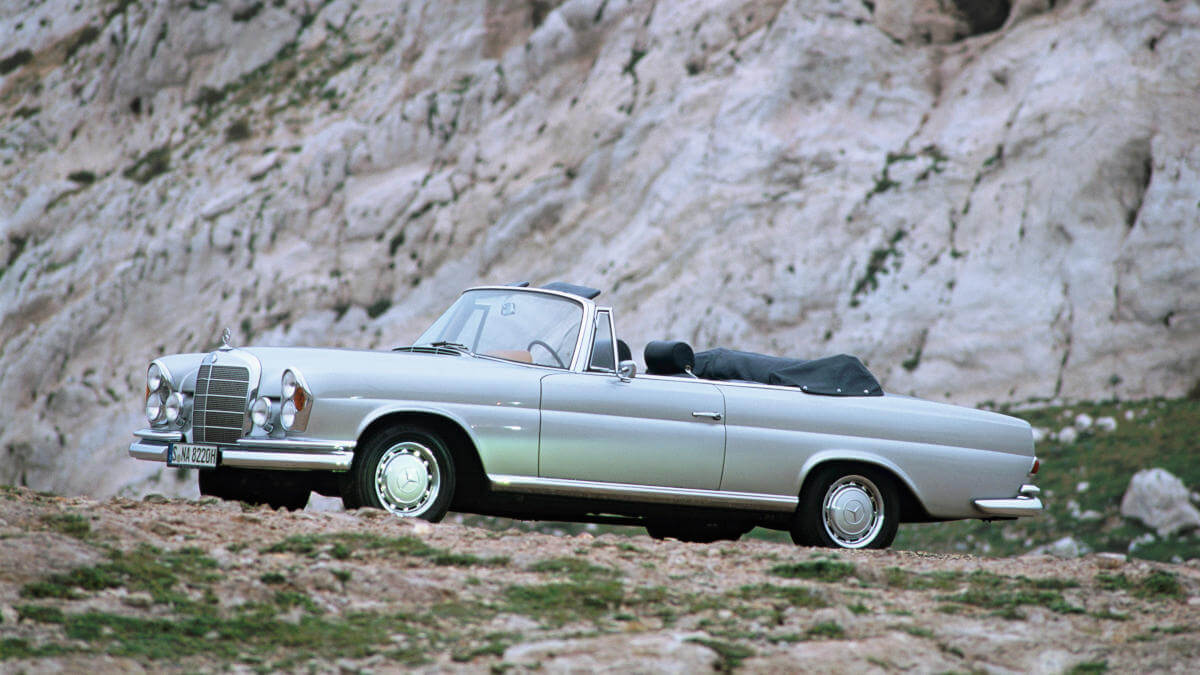



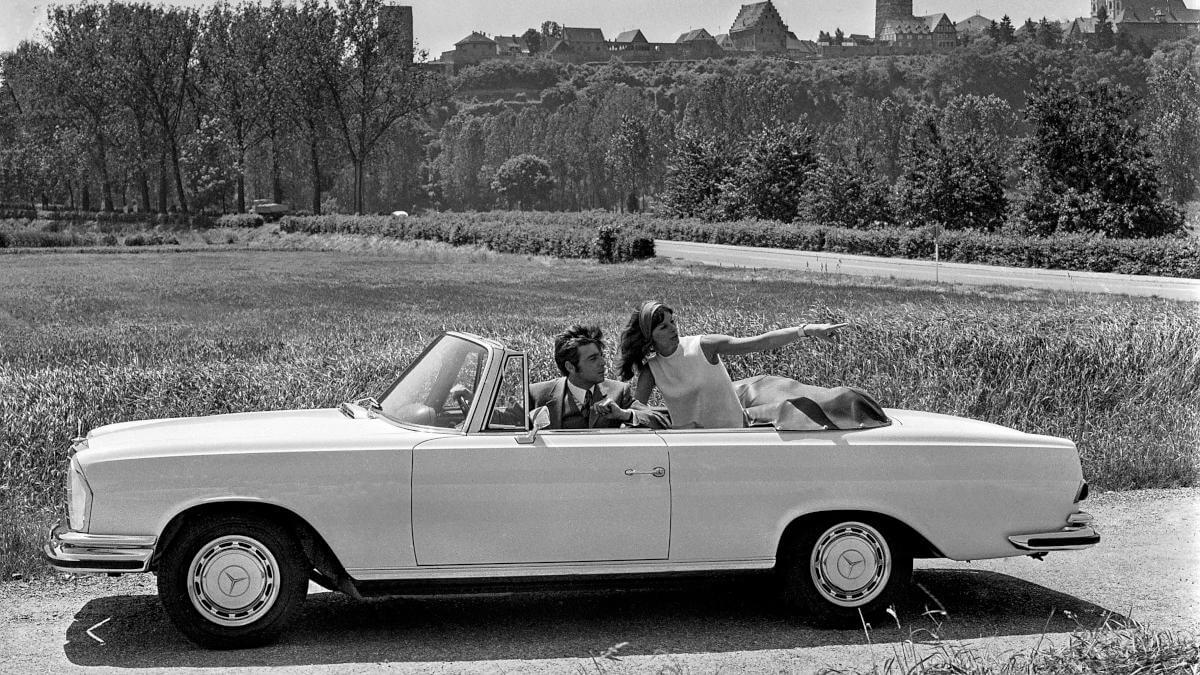



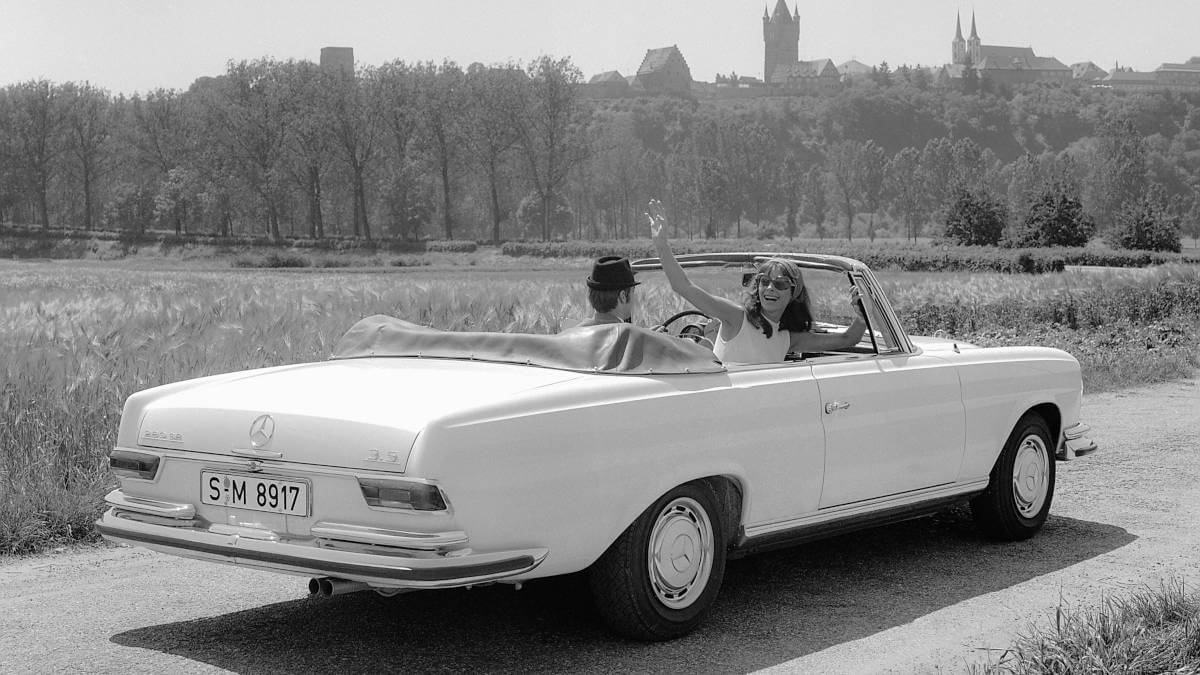



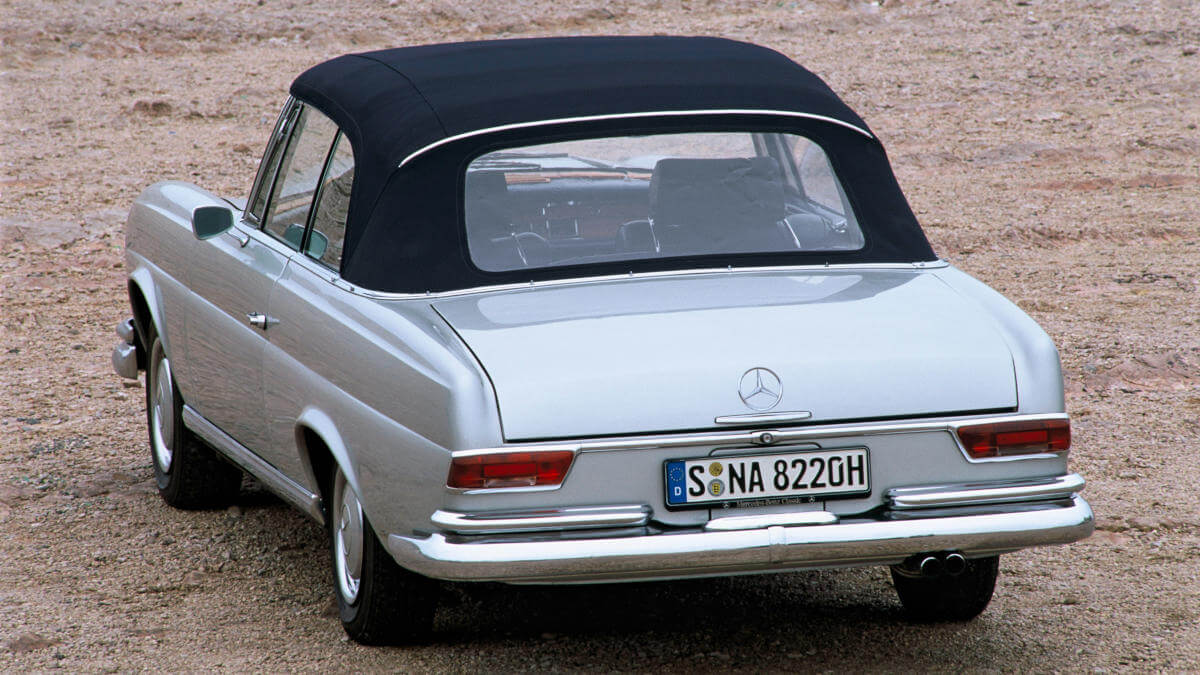



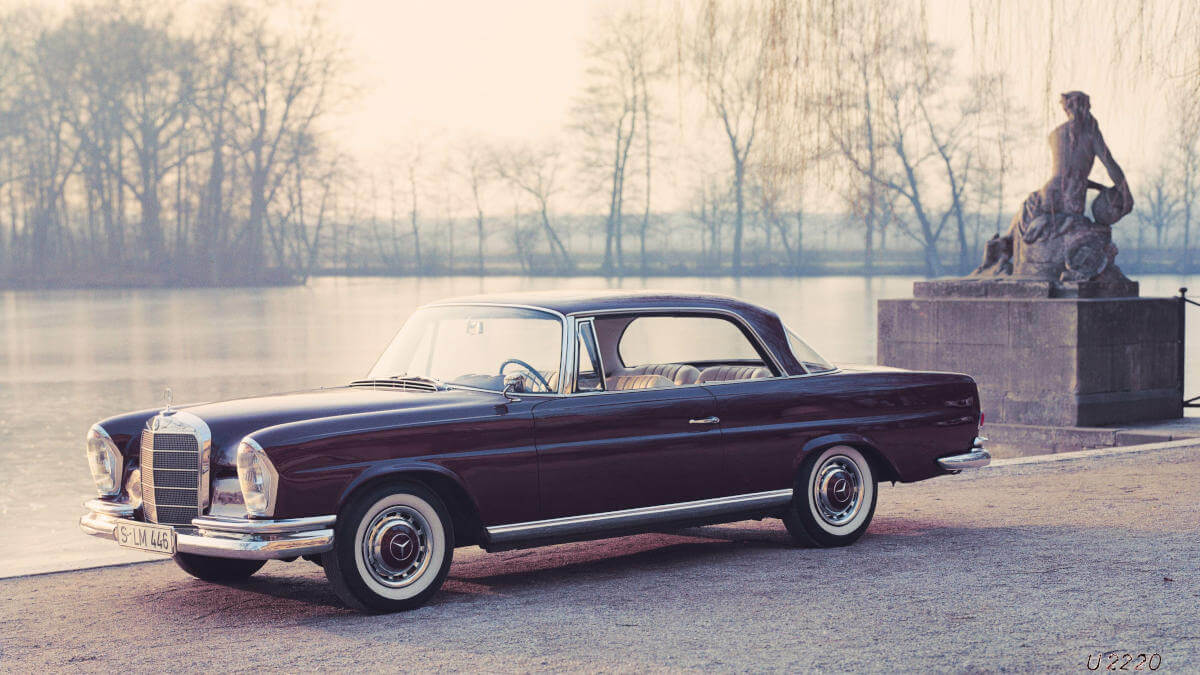



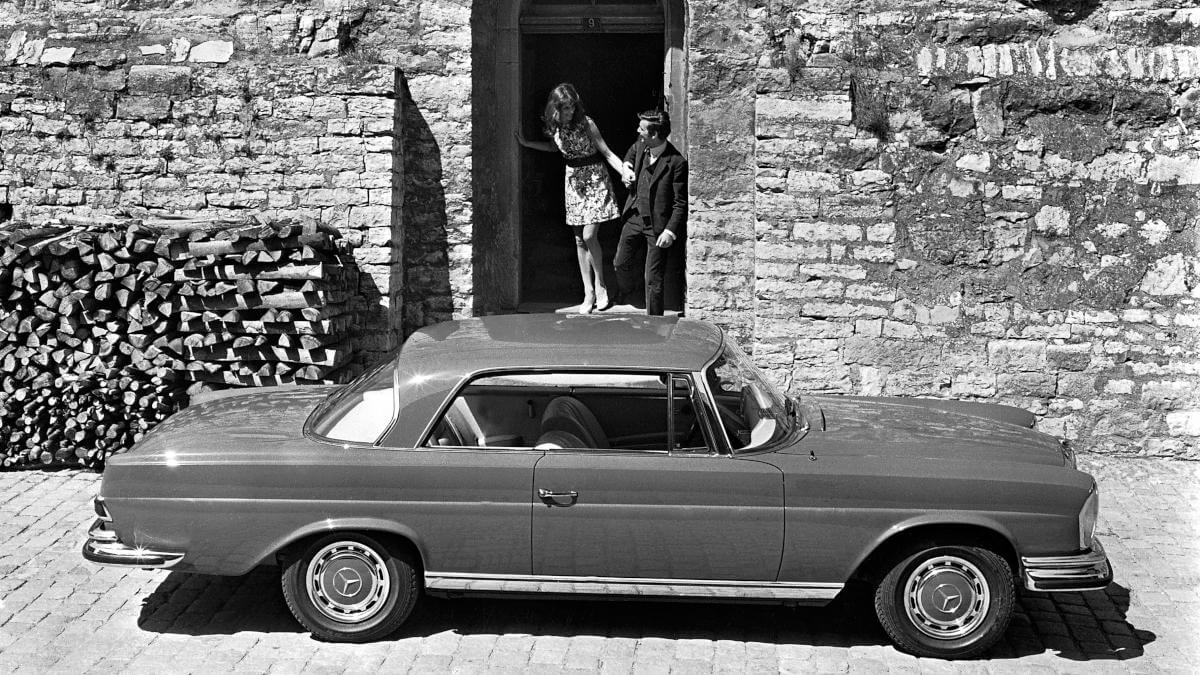



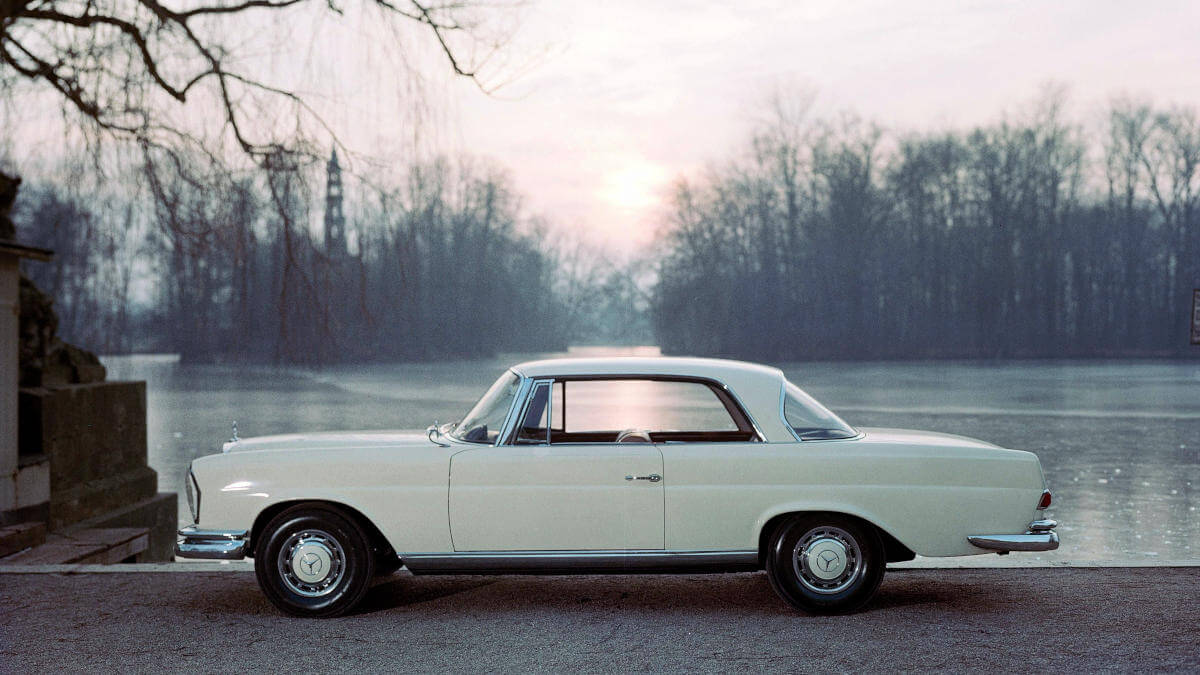



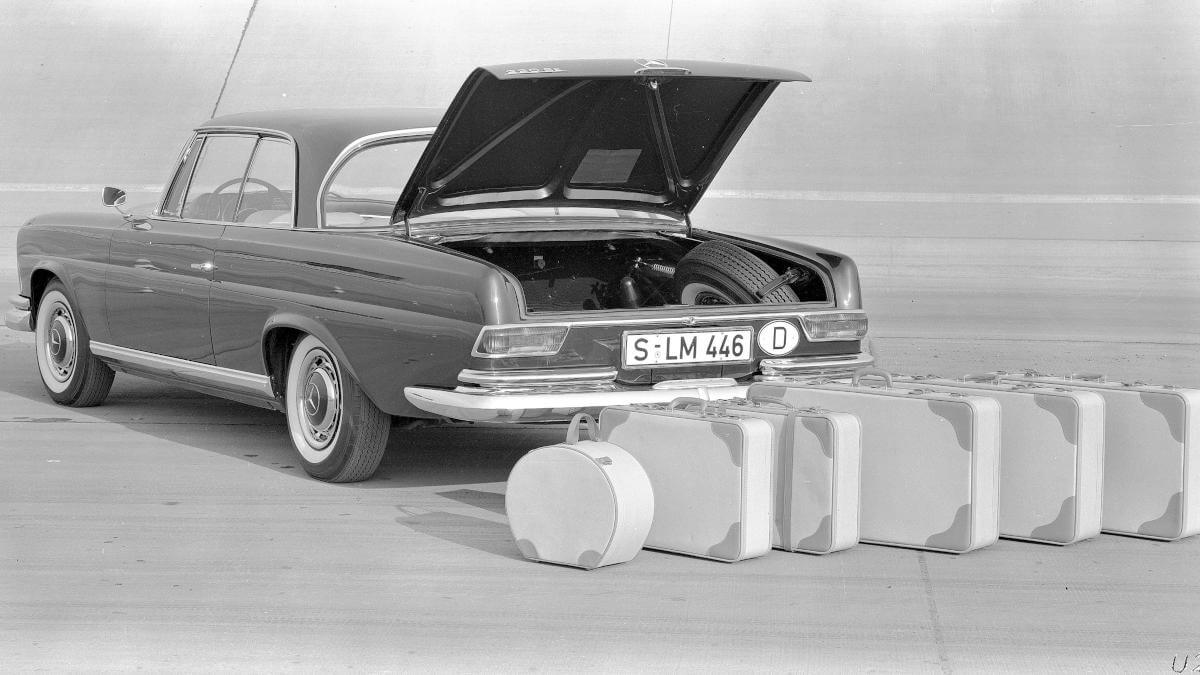



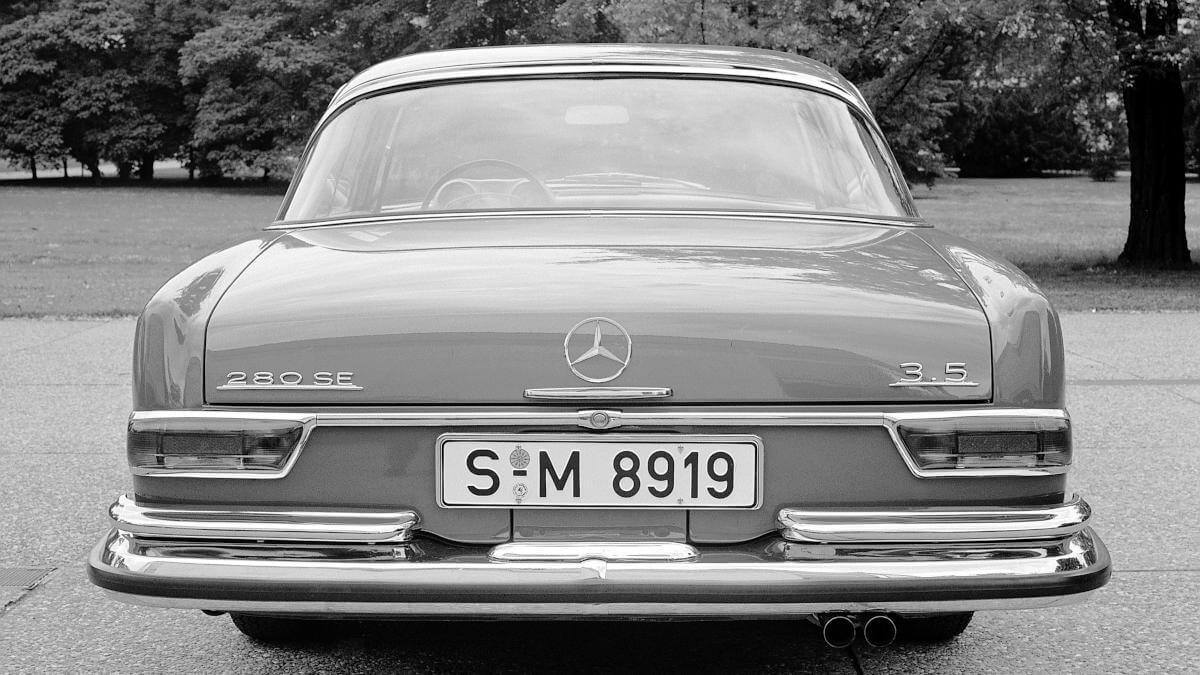



Station wagons according to factory standards
At the coachbuilder IMA in Mechelen, Belgium, station wagons of the W 111 were built as 230 S according to factory specifications. These were listed in the official price lists as ‘Universal’. Together with the station wagons of the ‘small tail fin’ W 110, a total of 2,754 units were produced. Other station wagons as well as ambulances, hearses and other special bodies were produced by Binz, Coune, Hägele, Jauernig, Marbach, Miesen, Movauto, Pollmann, Rappold, Pilato, Stolle, Welsch and other companies.
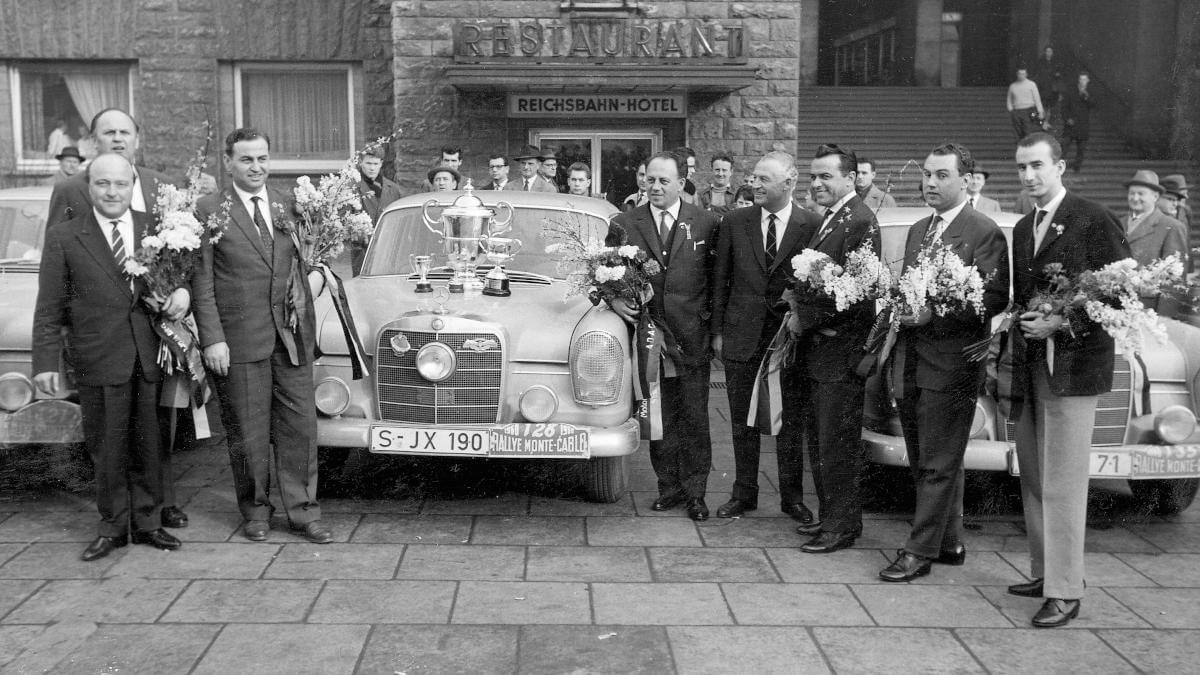



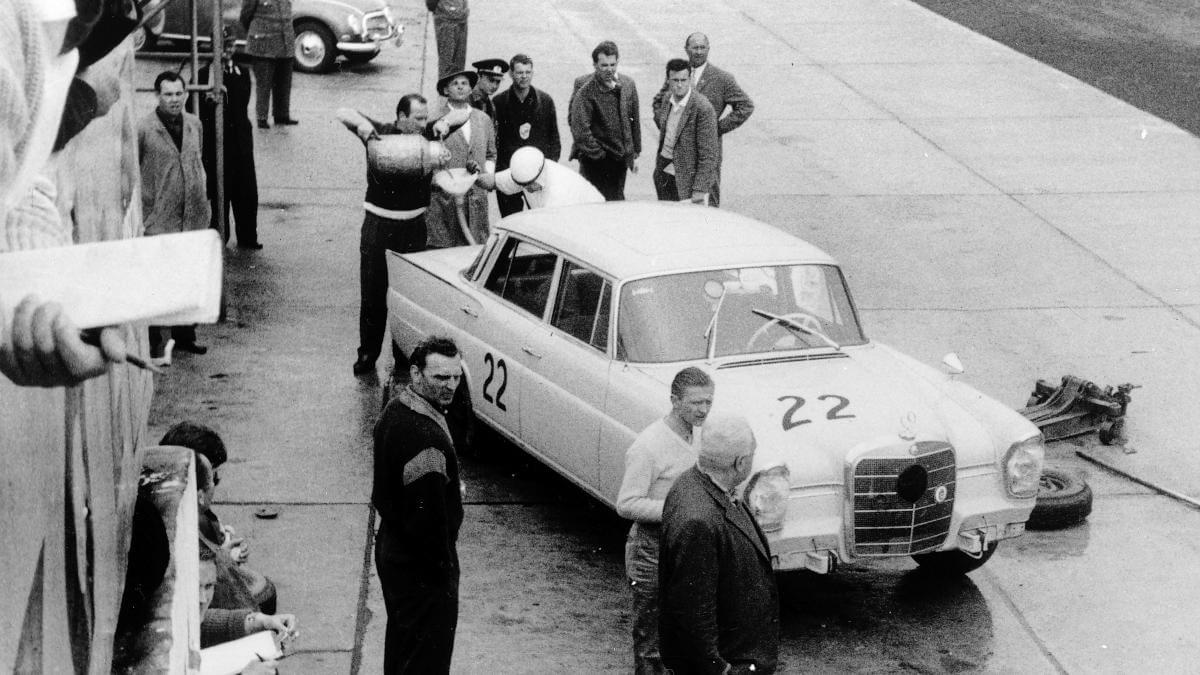



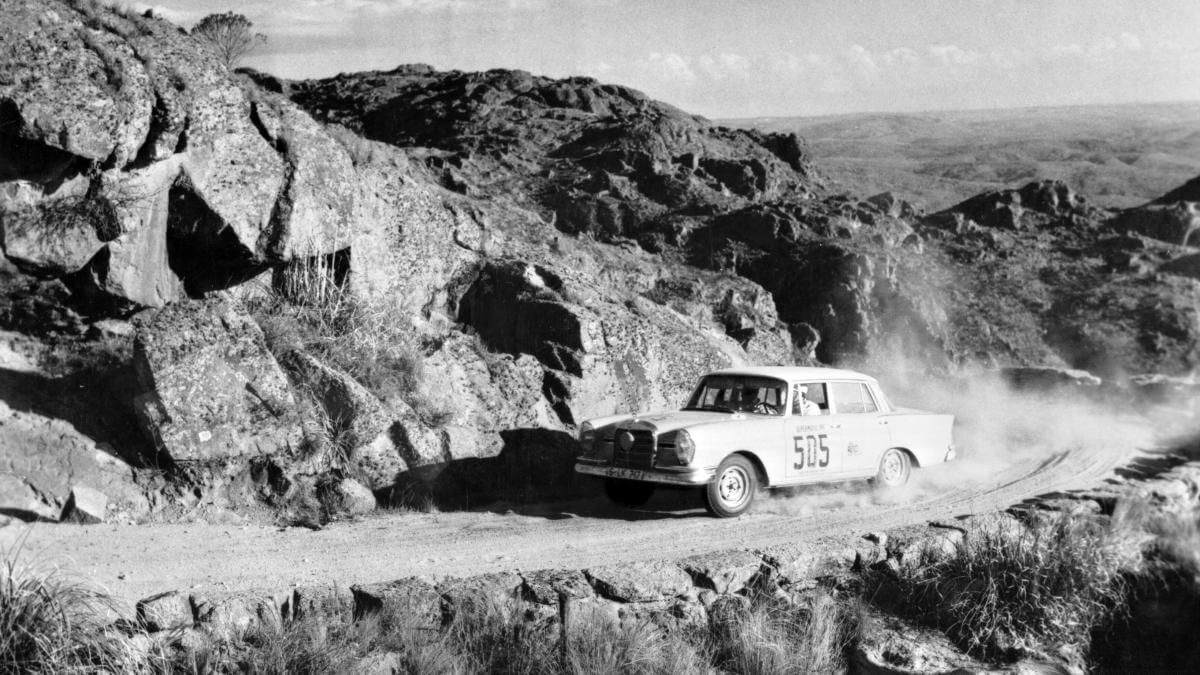



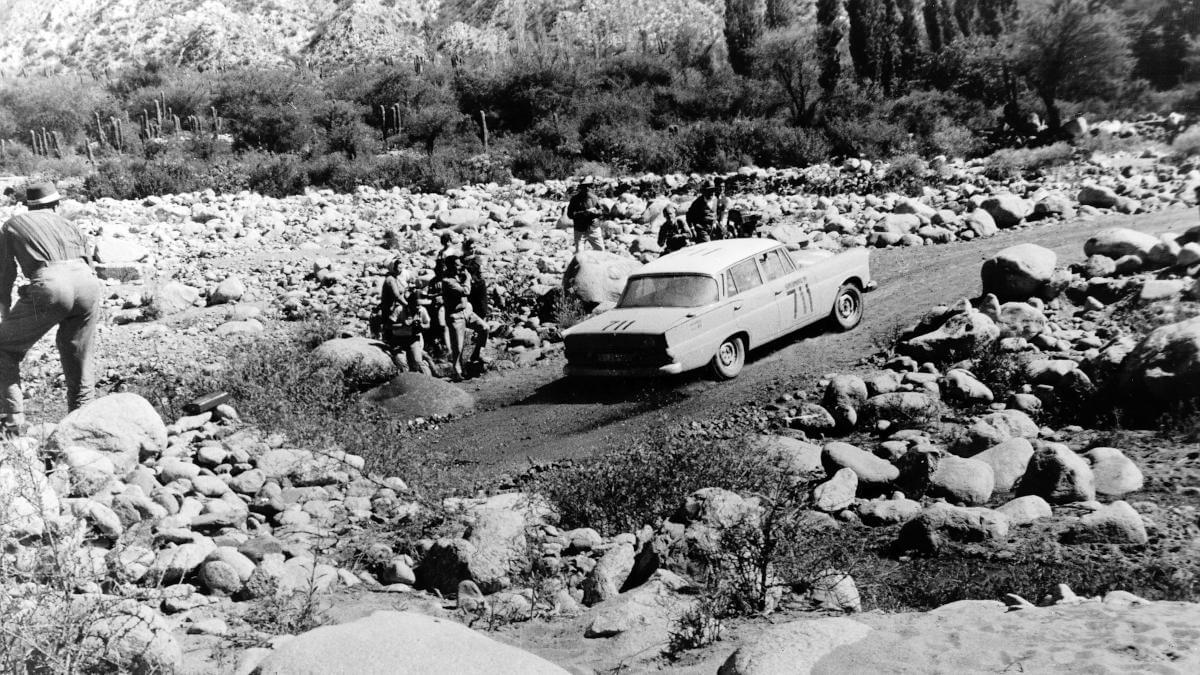



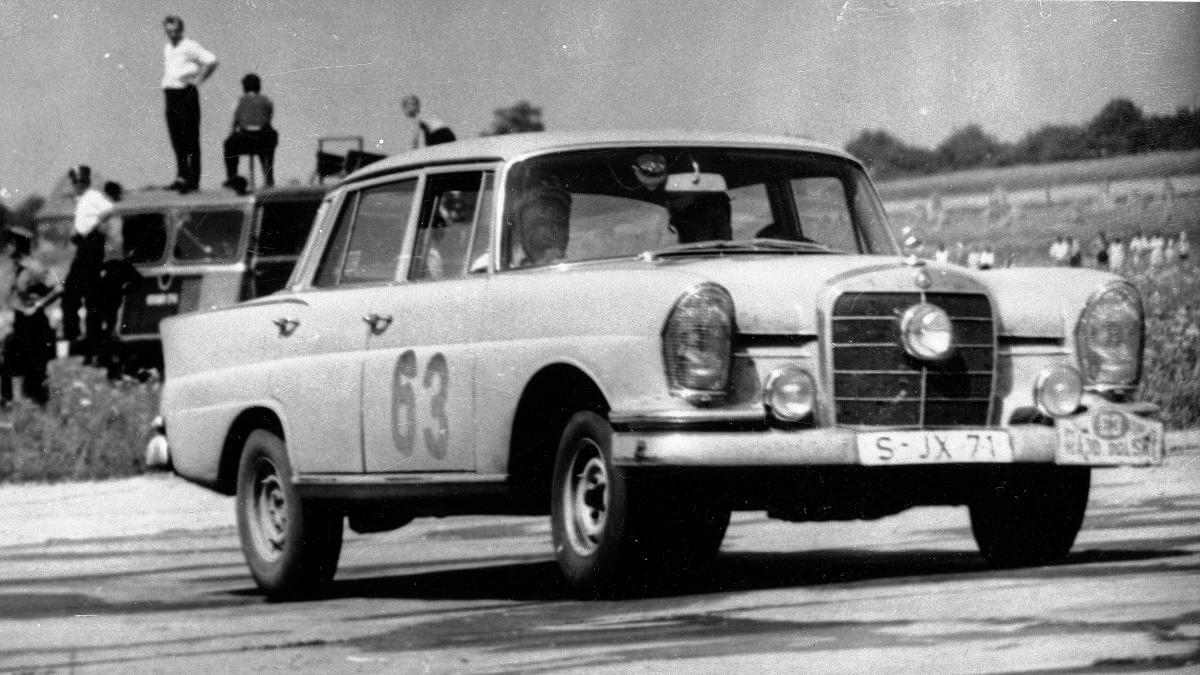



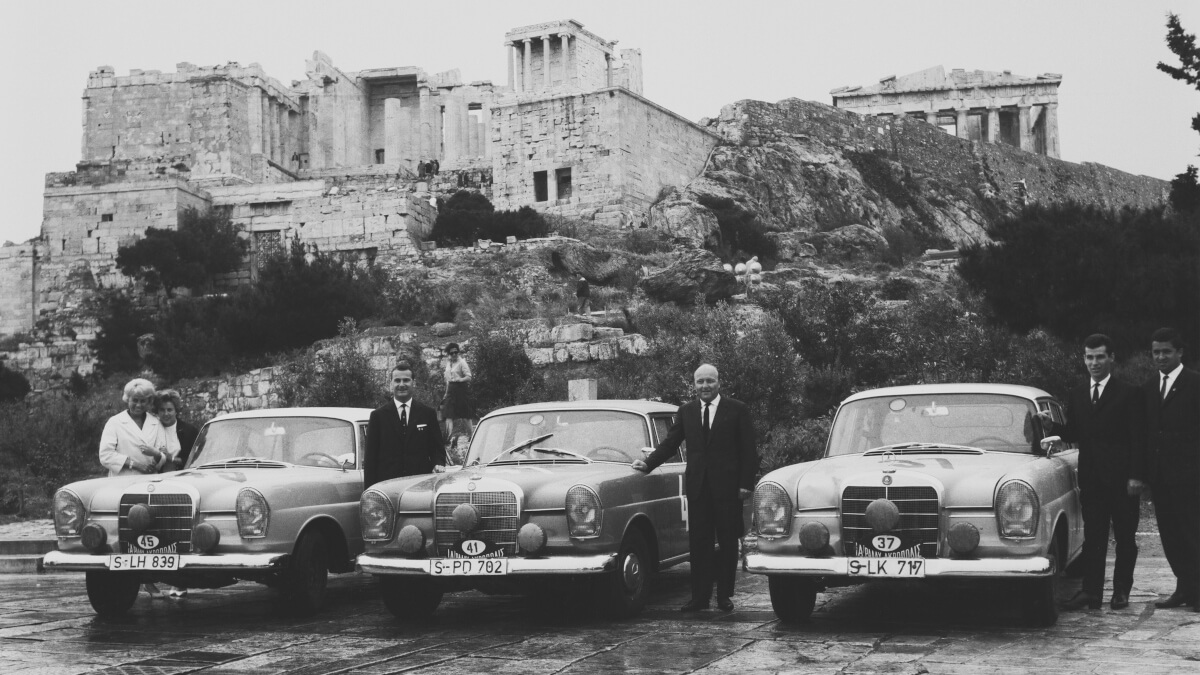



Also successful in motorsports
More astonishing than the various body variants and the first safety bodywork, for some readers might be that the W 111 and W 112 were used by the factory in motorsports. The large sedan competed in various rallies such as the Monte Carlo 1960, the Acropolis in Greece or in Poland, as well as in the 6-Hour race at the Nürburgring. In addition, Mercedes-Benz sent delegations to Argentina in 1961 and 1962 to participate in the Grand Prix of Touring Cars. There they drove more than 4,600 kilometers across the country. Walter Schock won at the first attempt, the Swedish women’s team Ewy Rosqvist and Ursula Wirth won at the second. Today, racing a Mercedes-Benz S-Class is almost impossible. And this despite the fact that the latest models are still regularly tested on the Nürburgring Nordschleife.
Images: Mercedes-Benz




